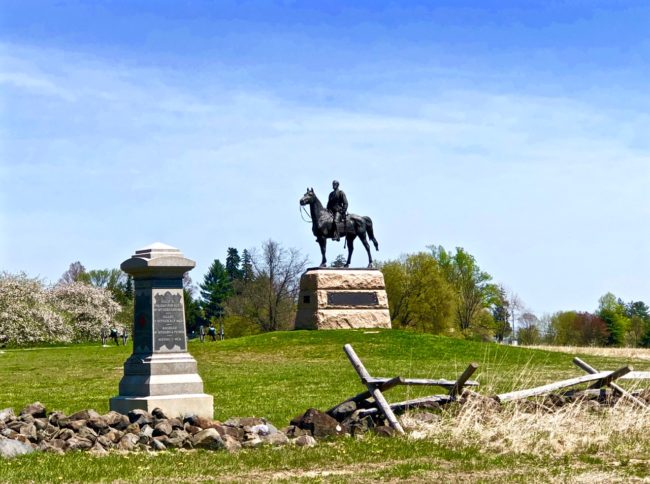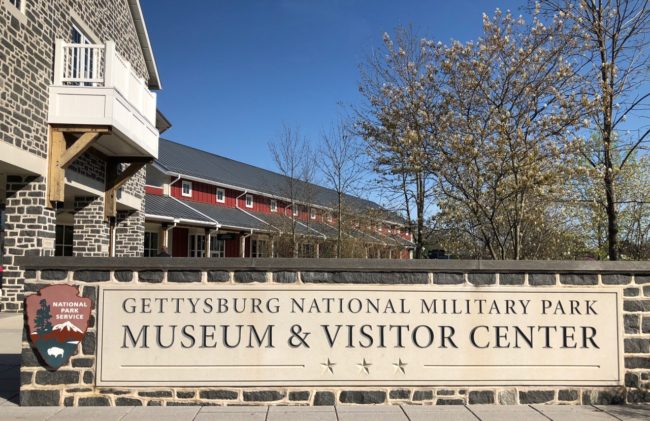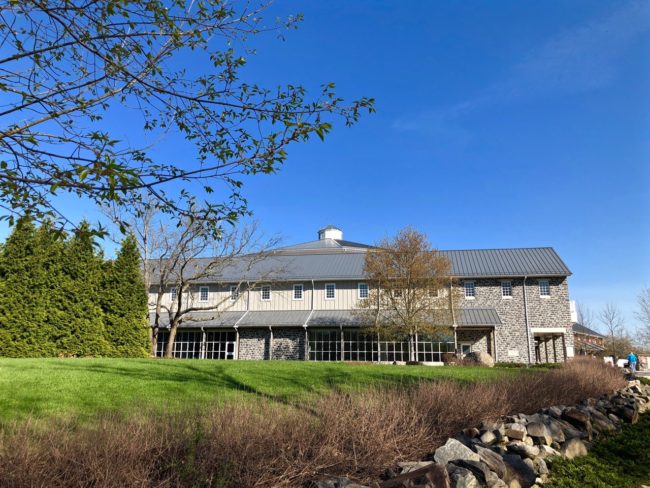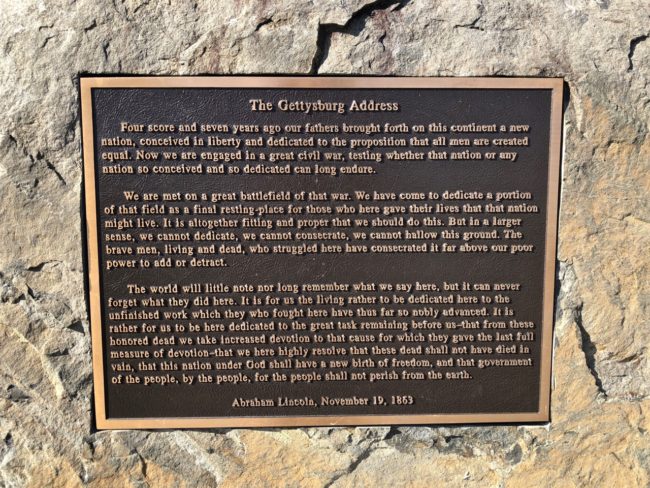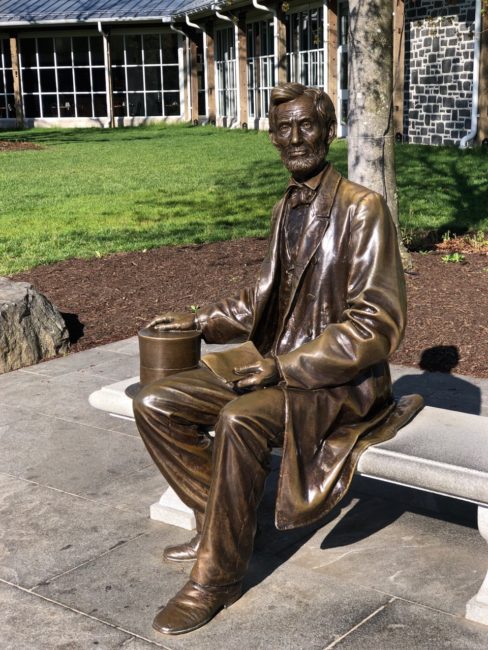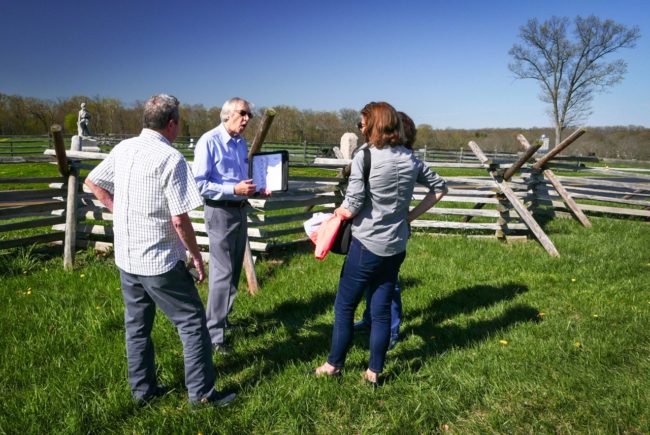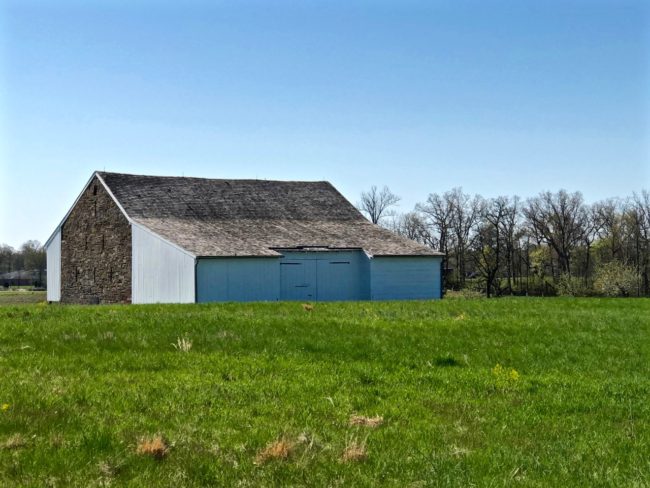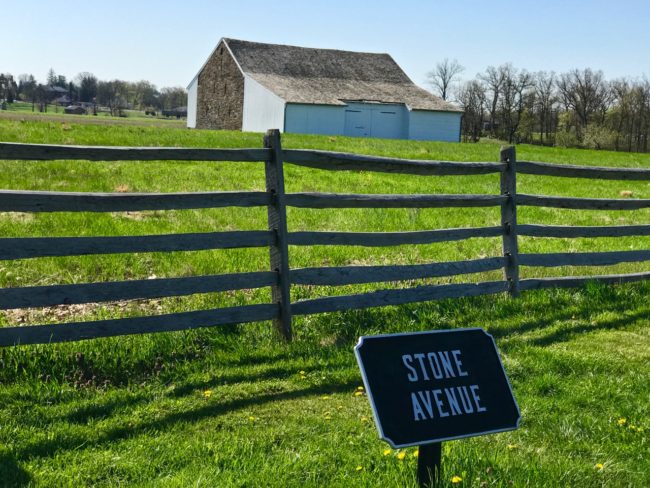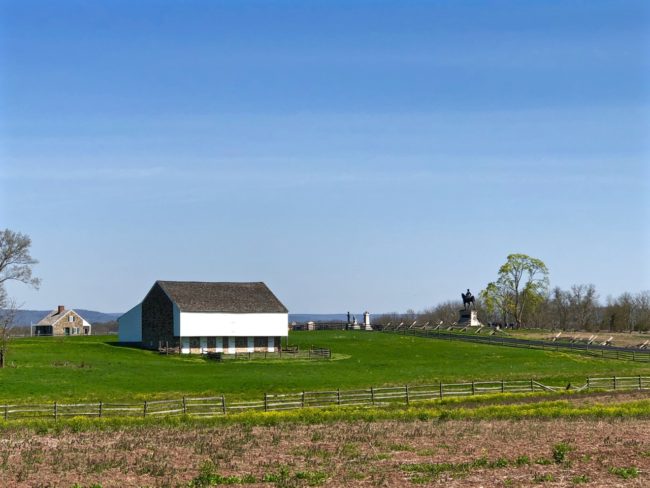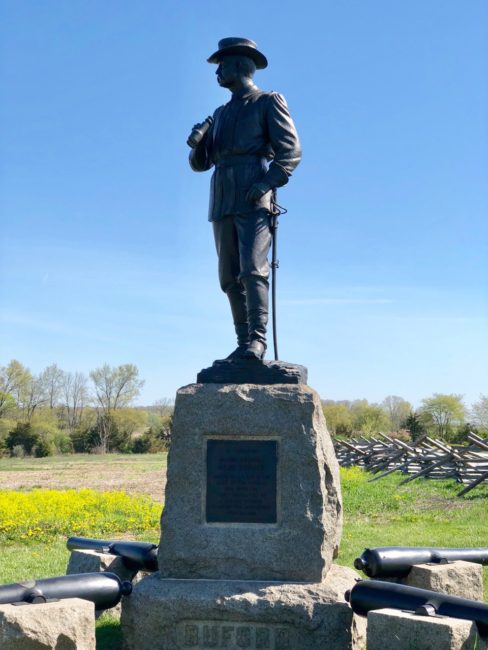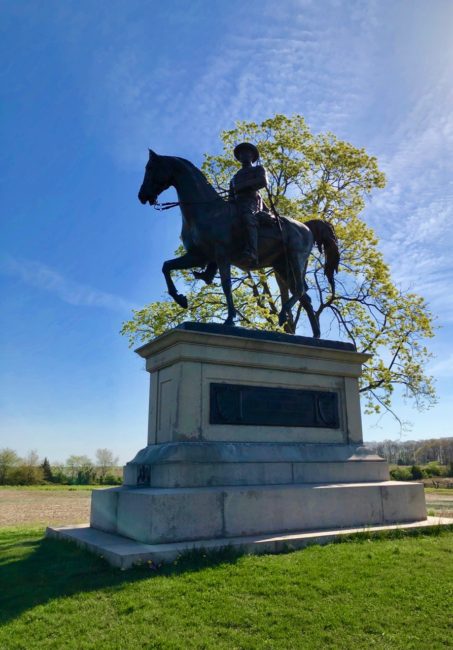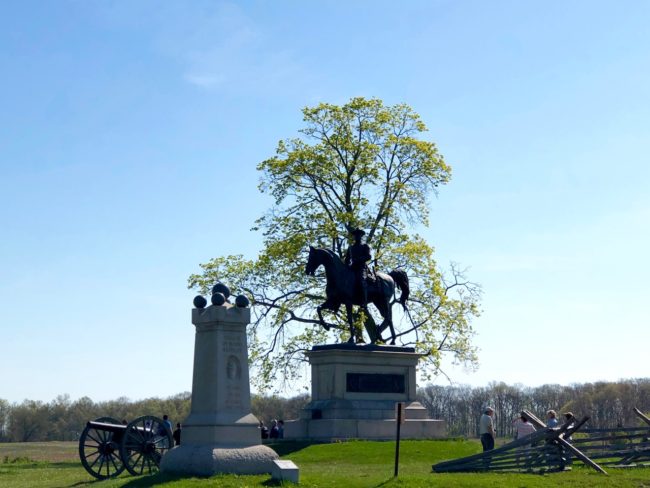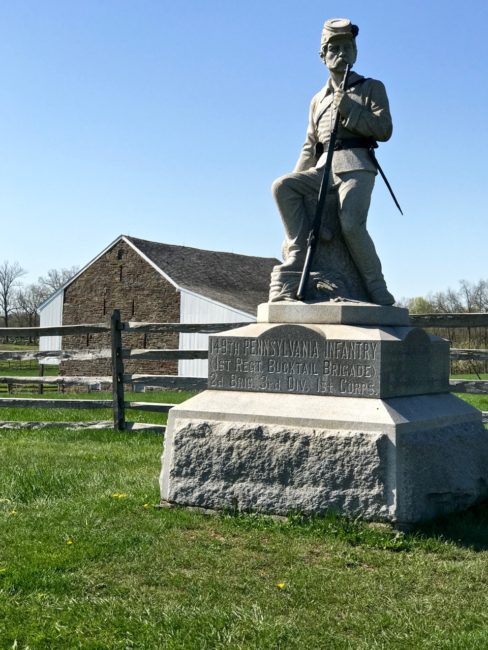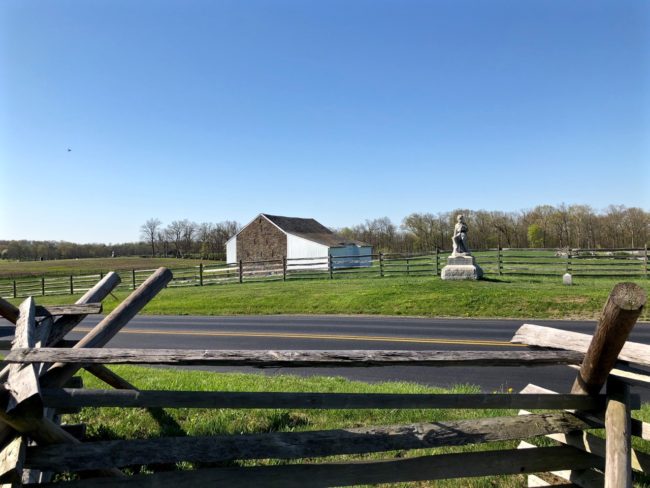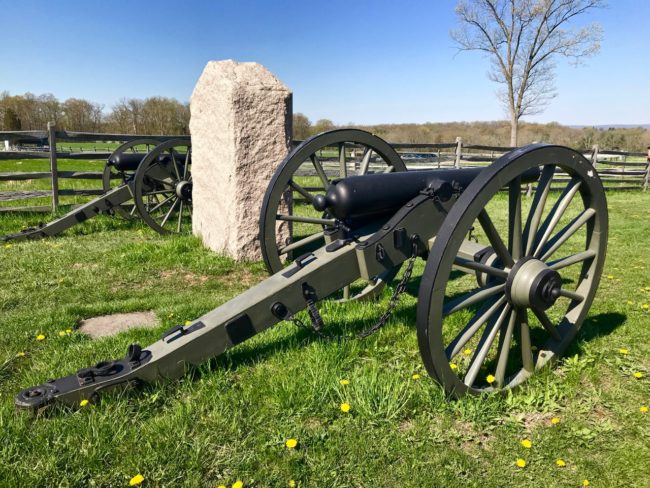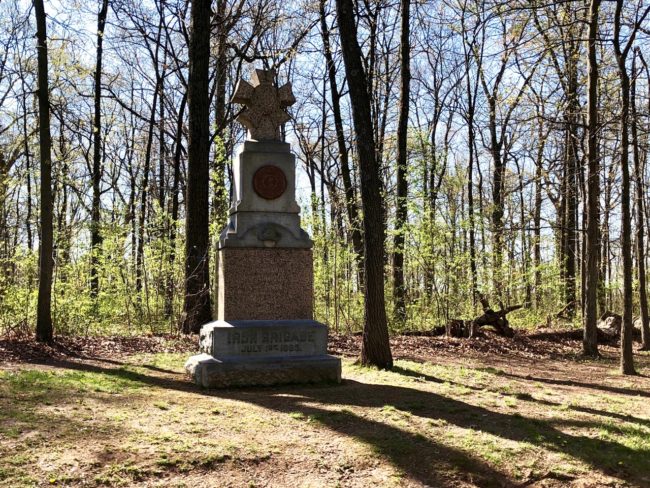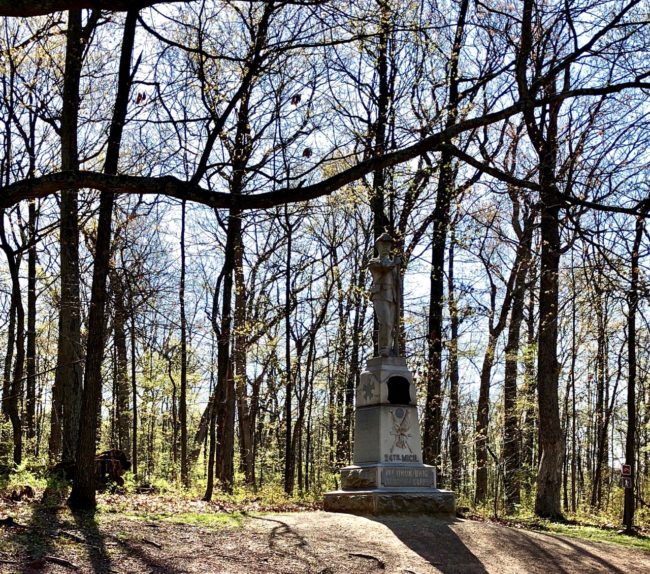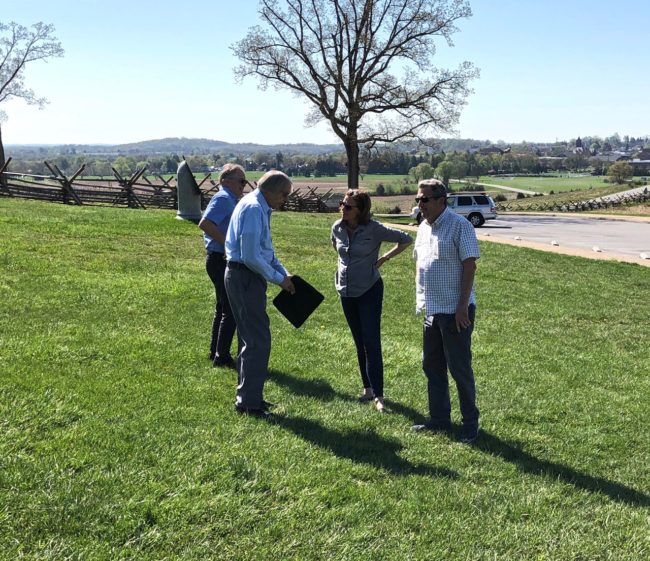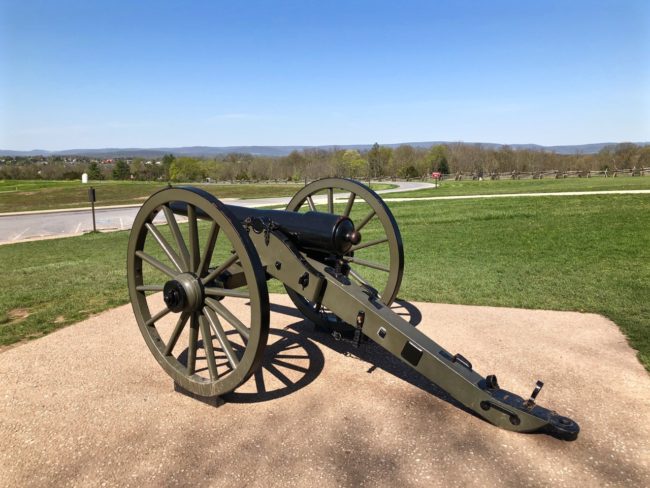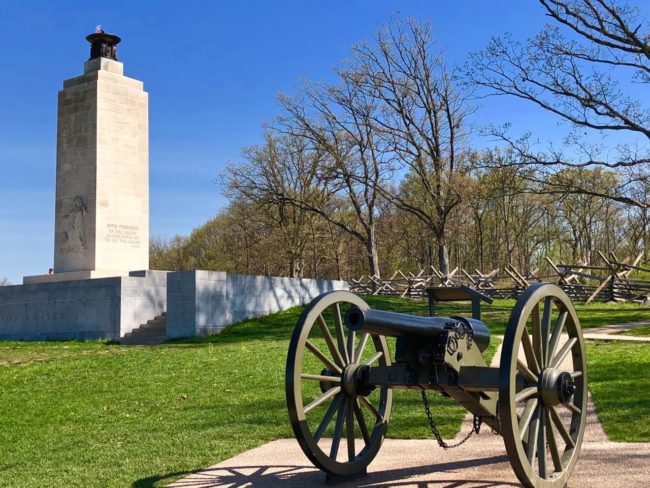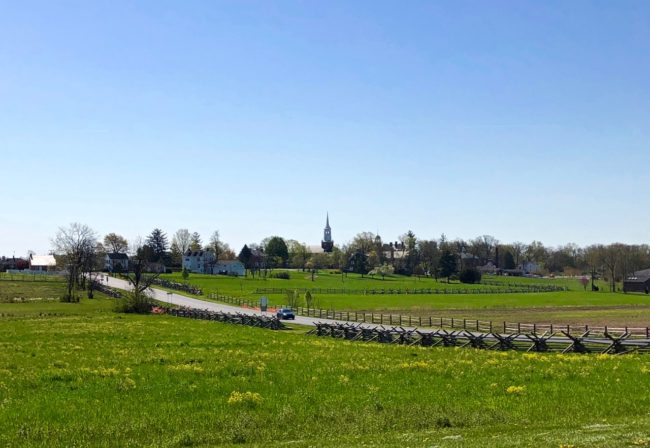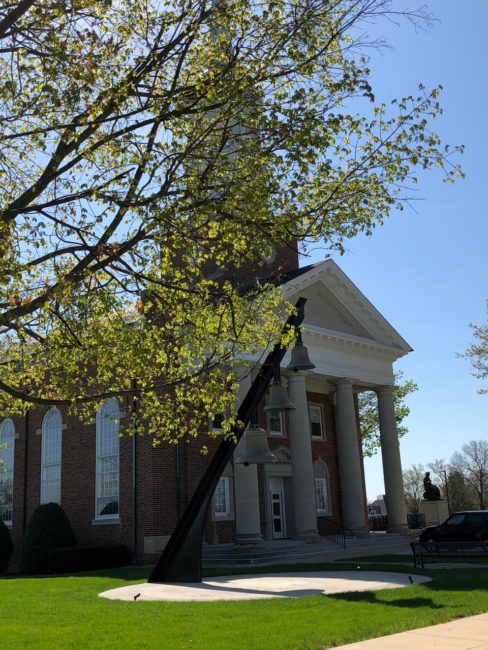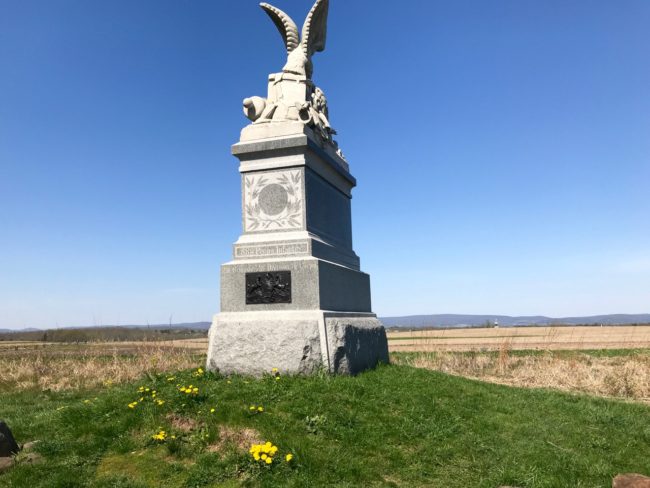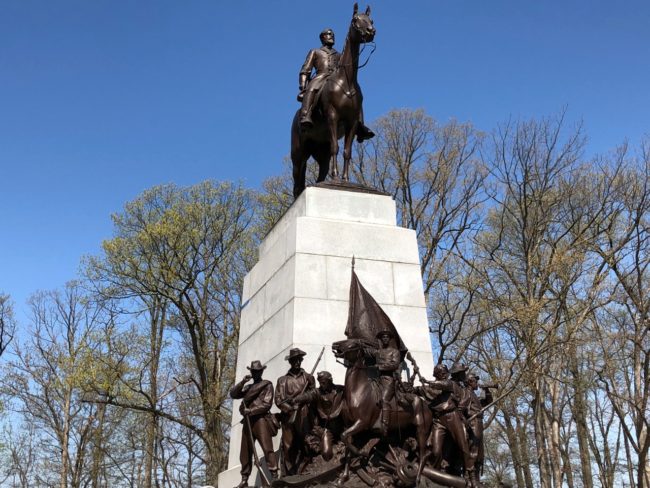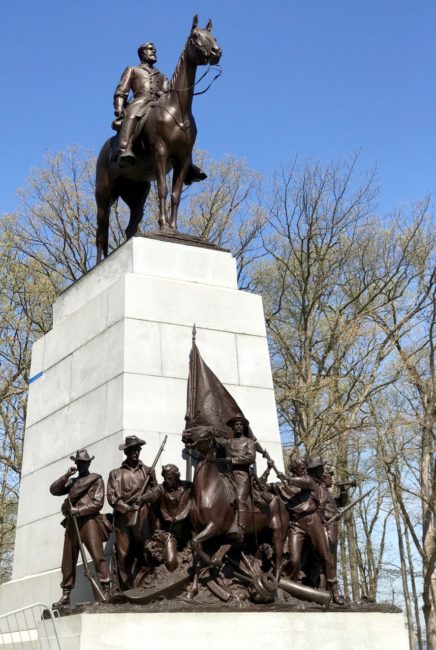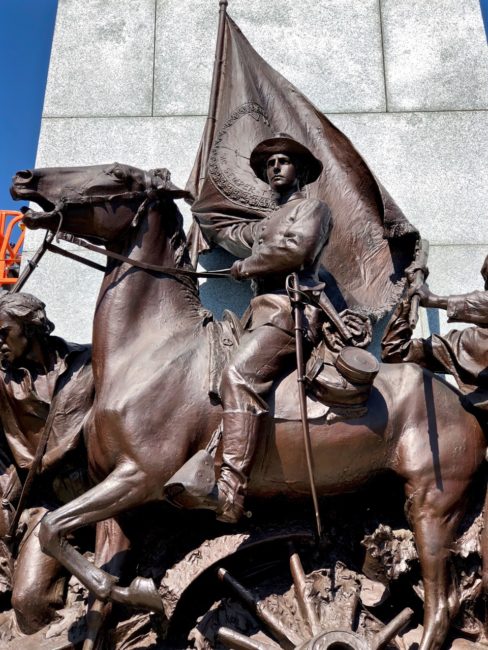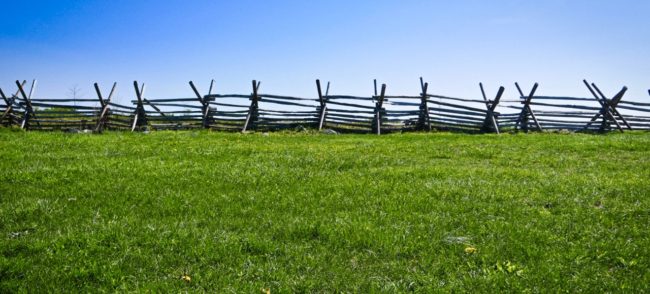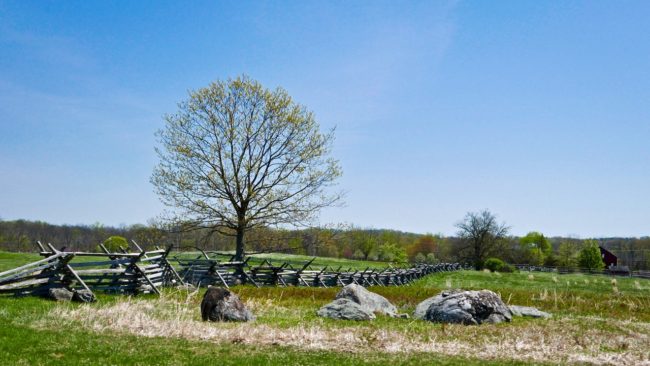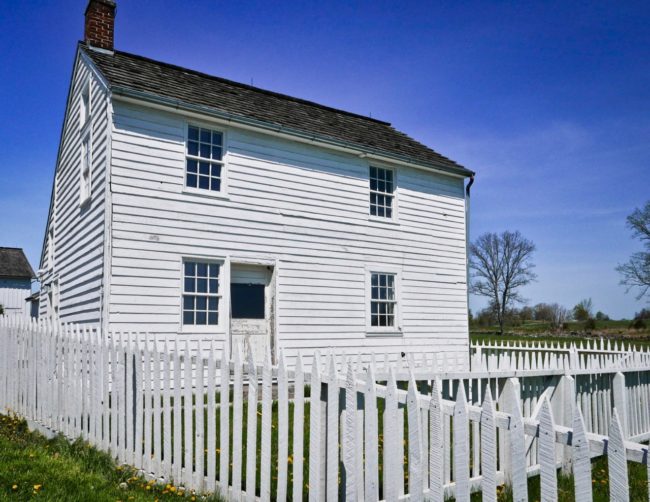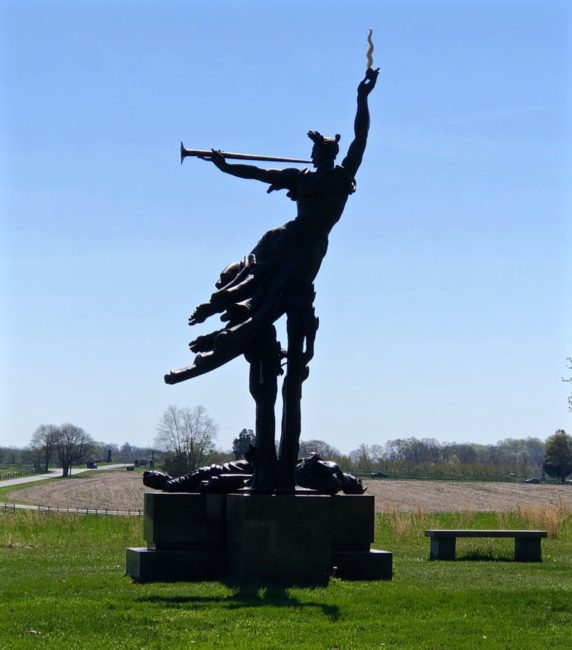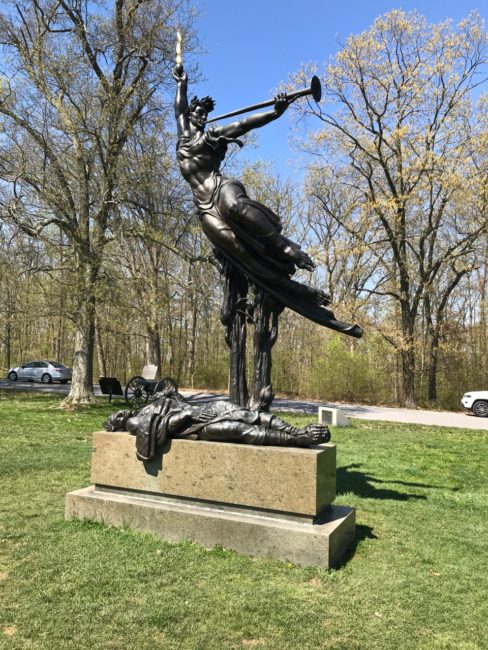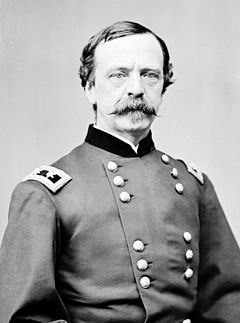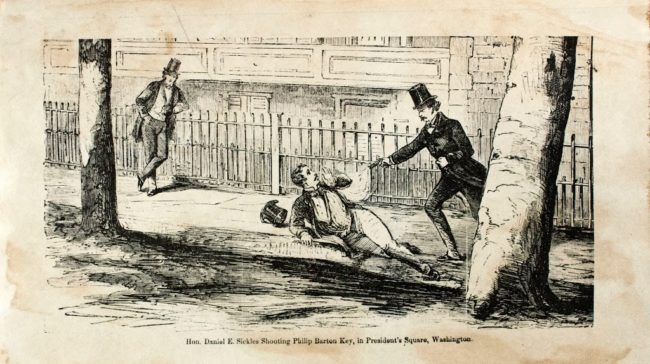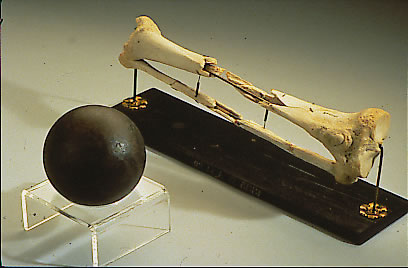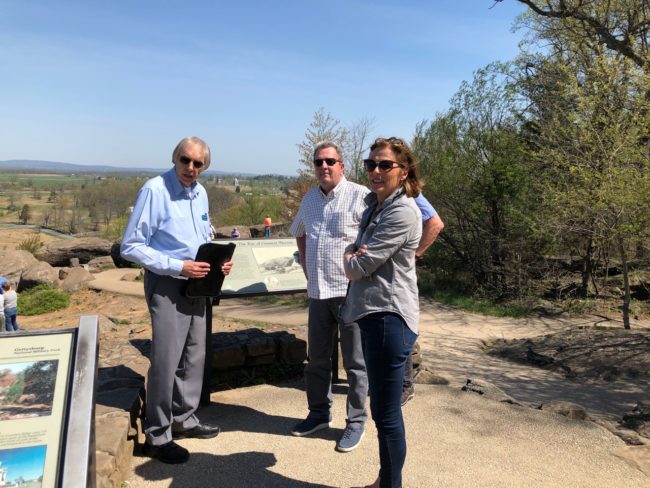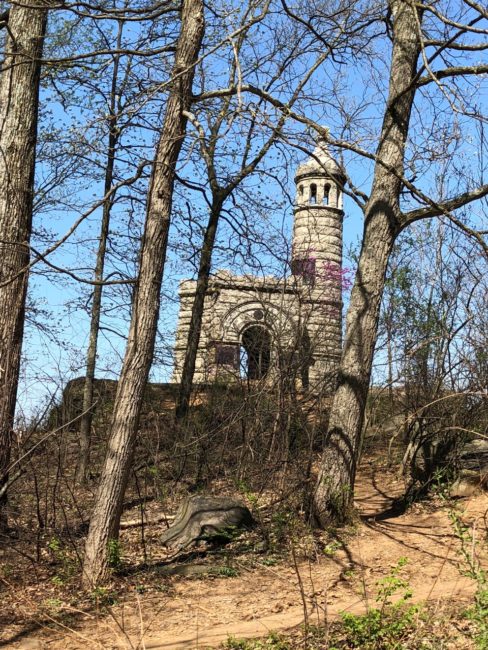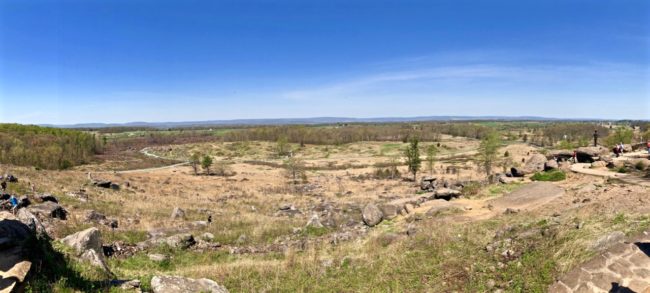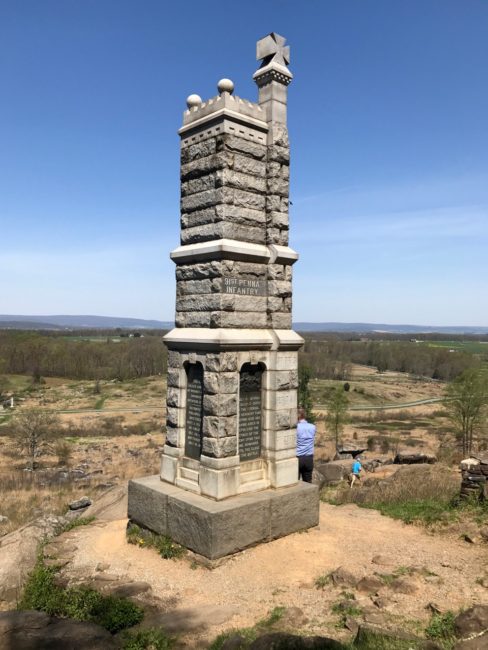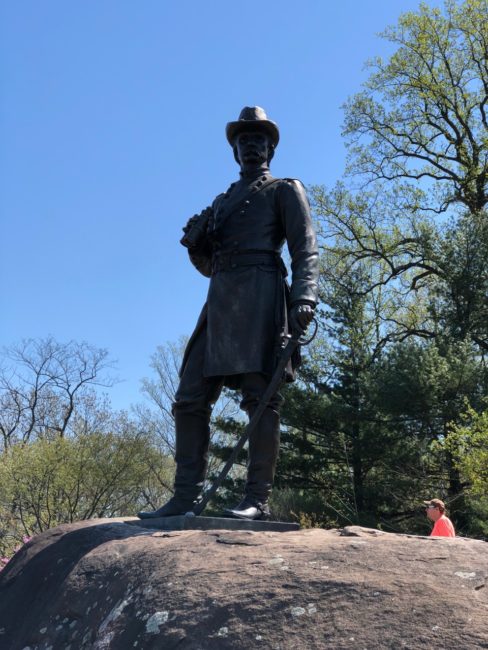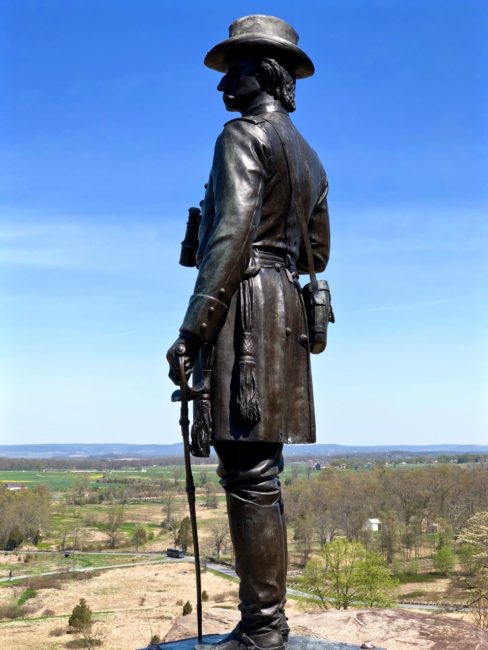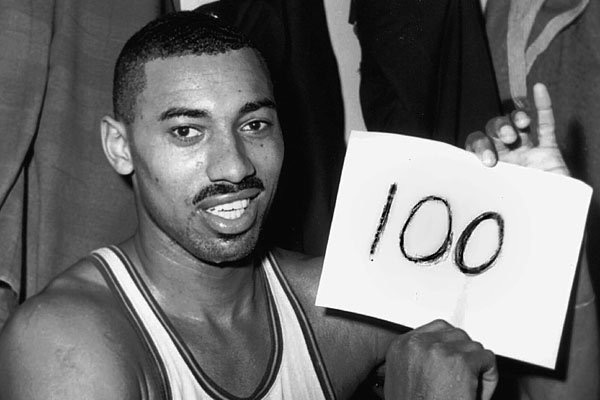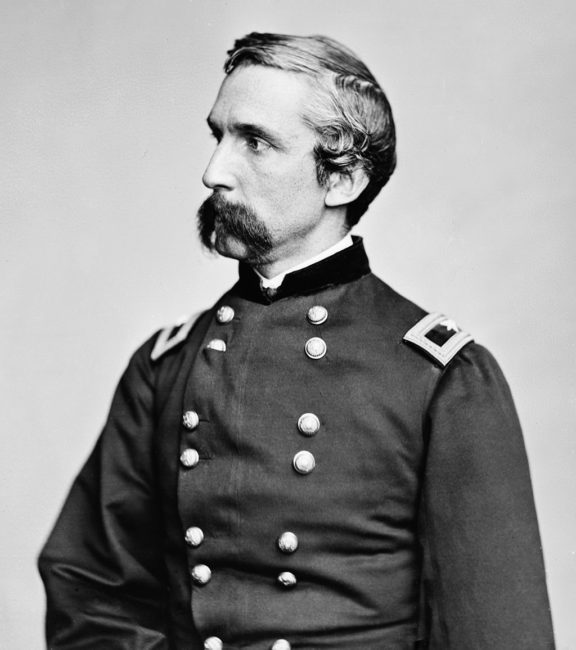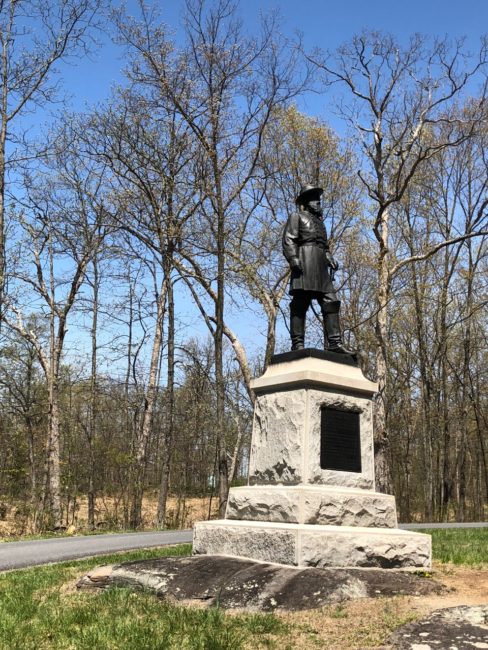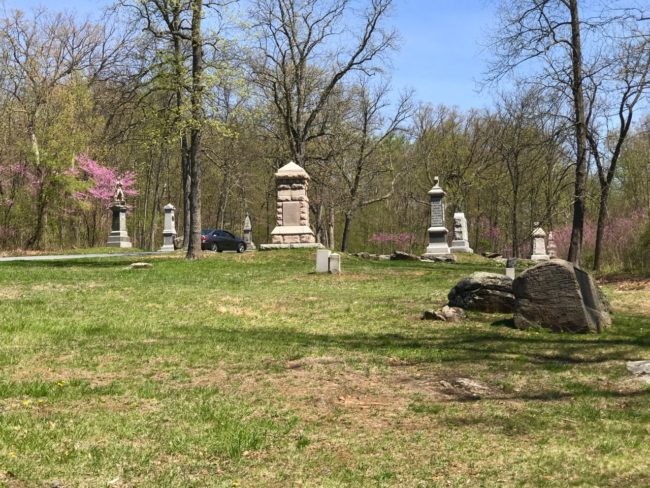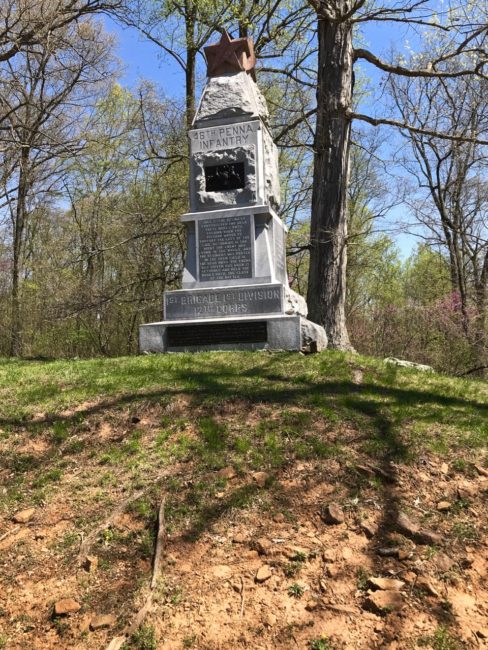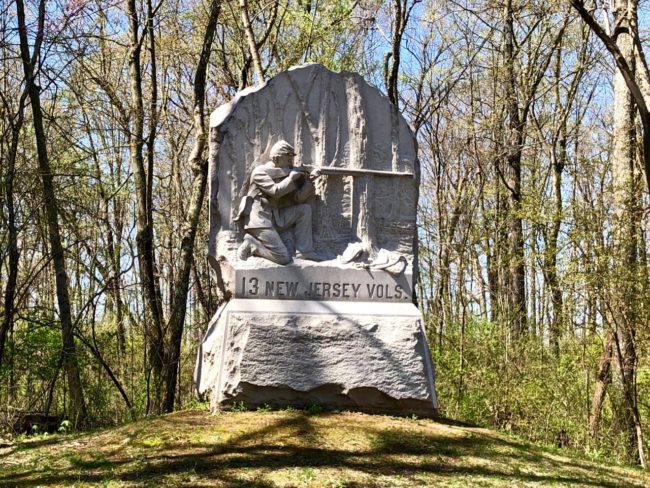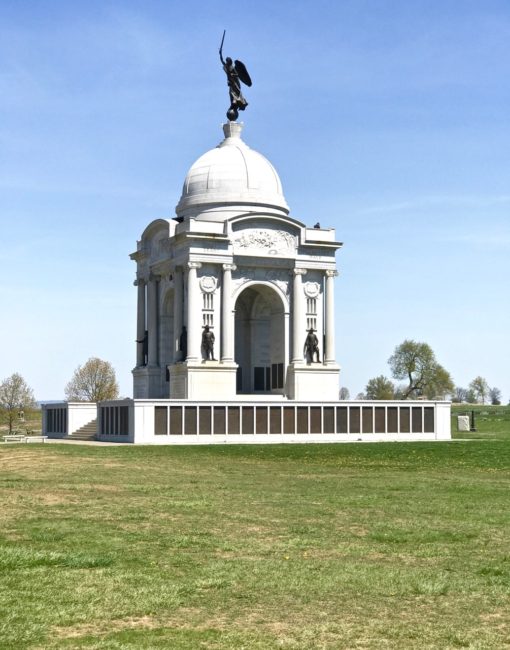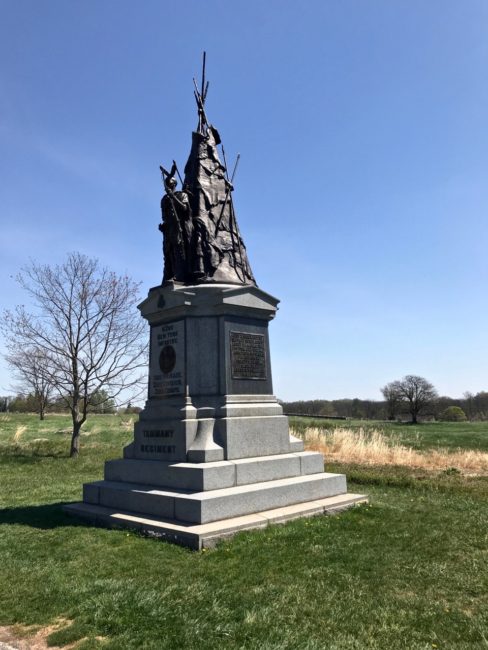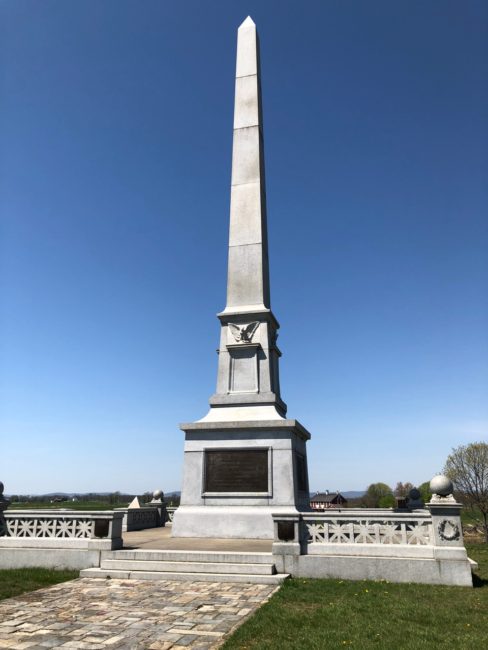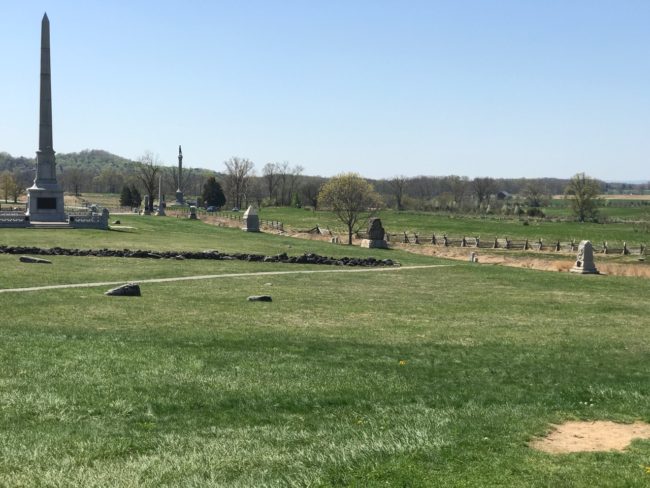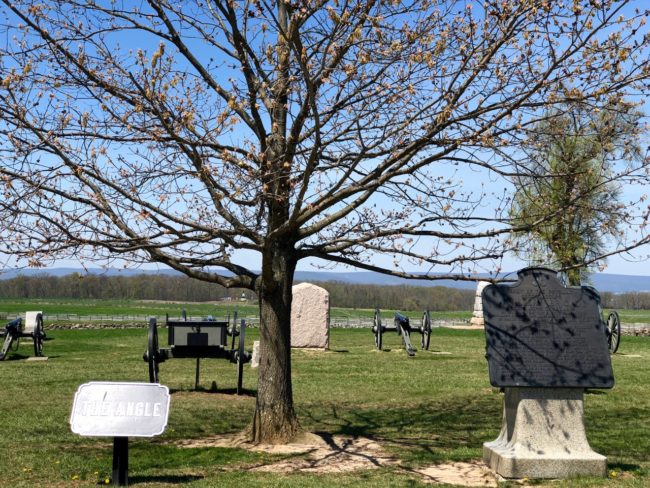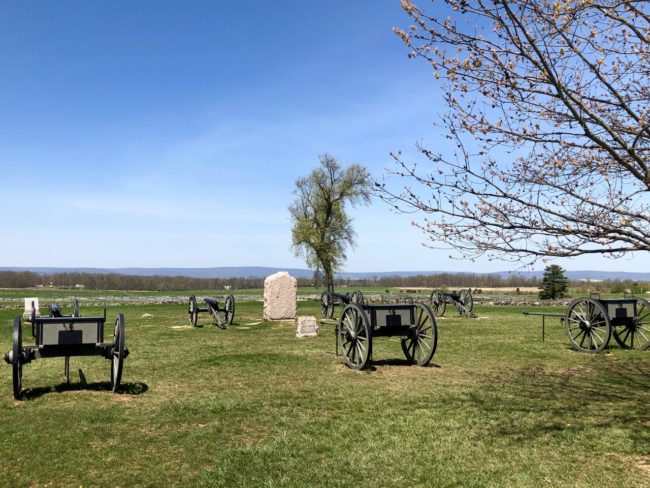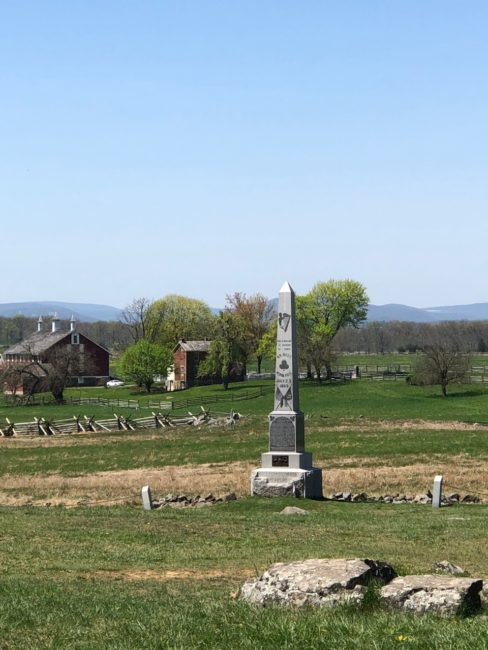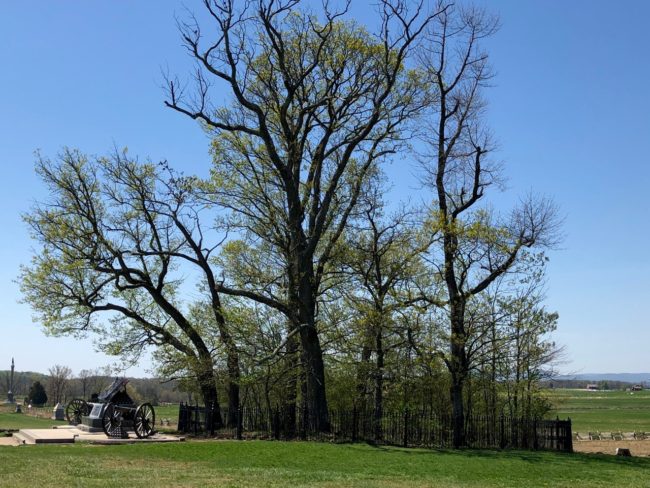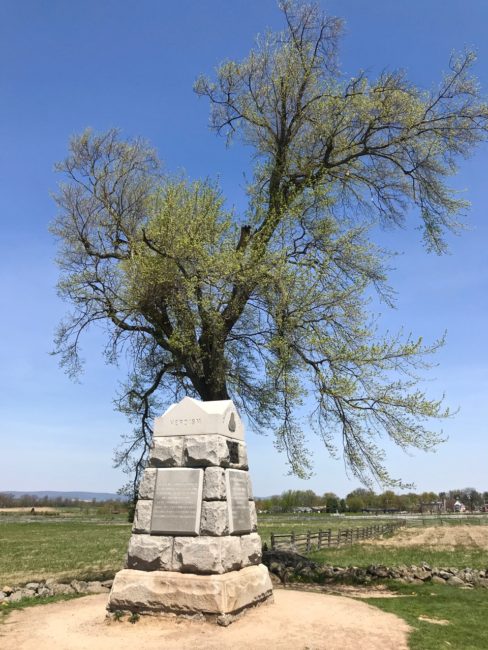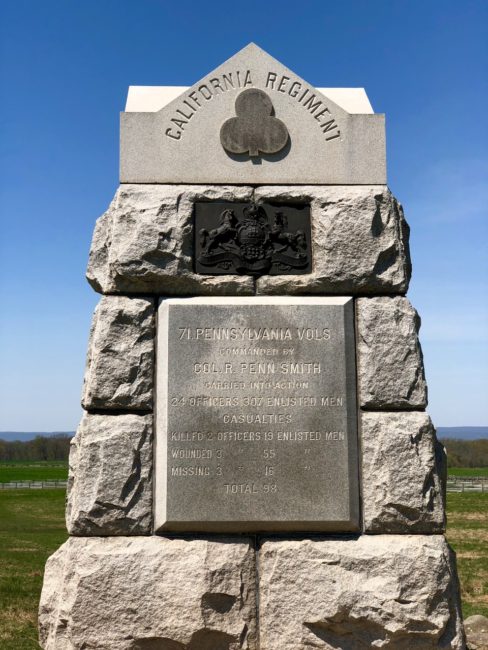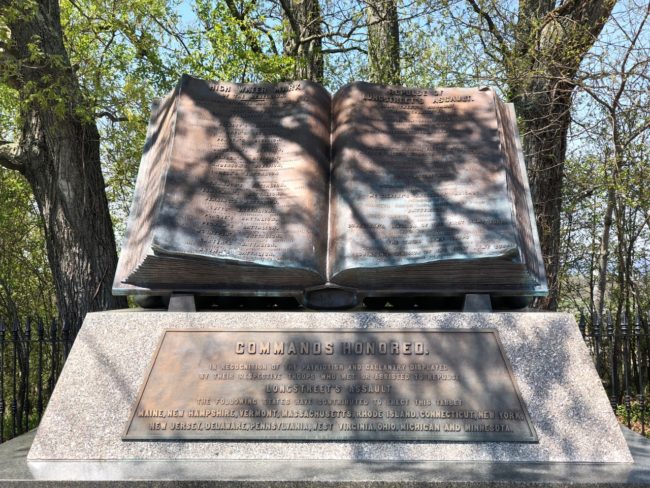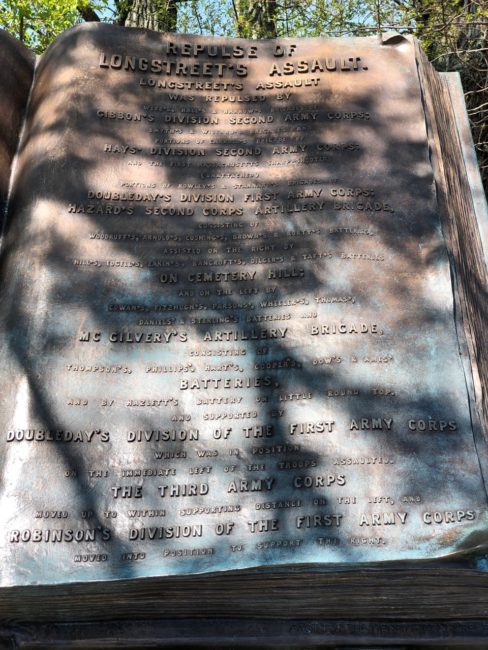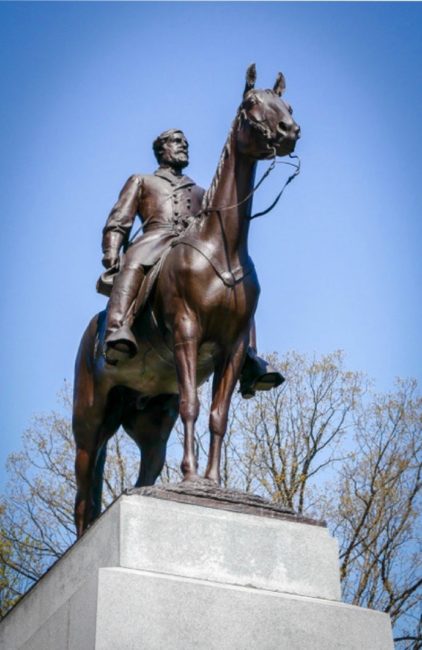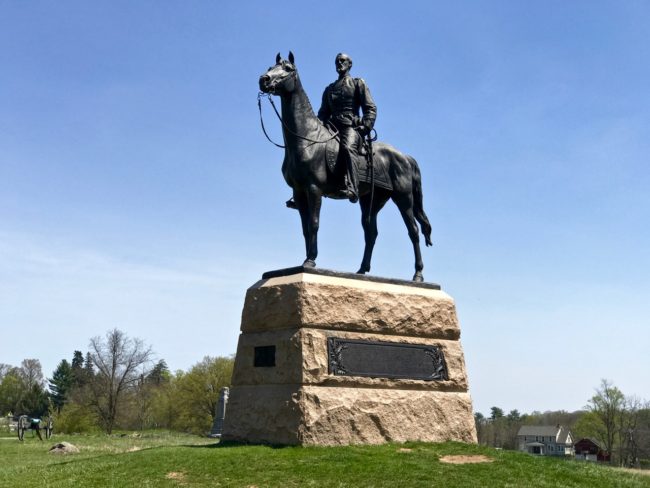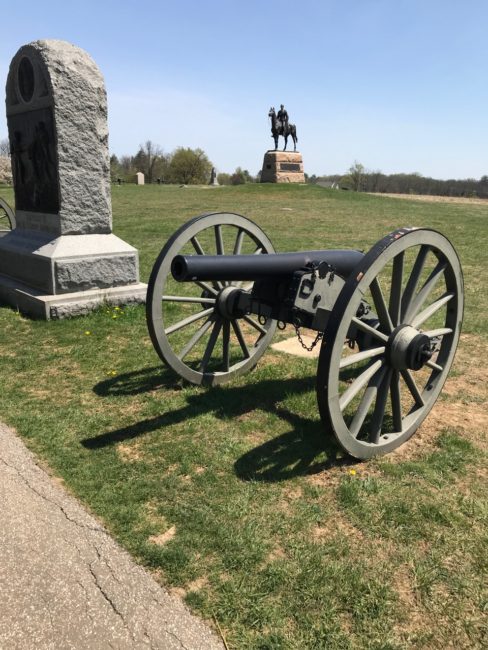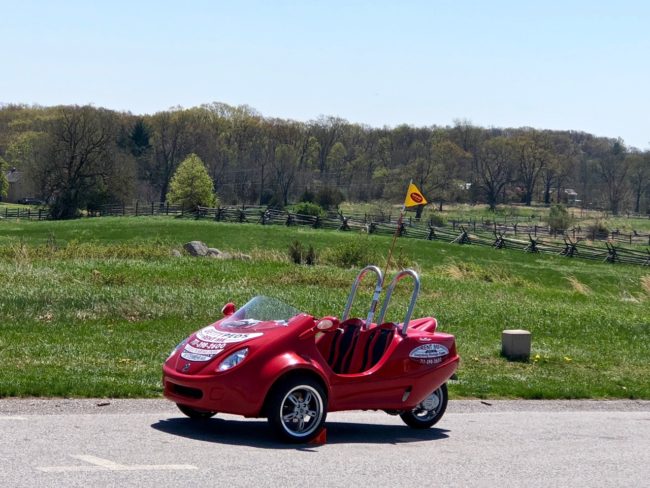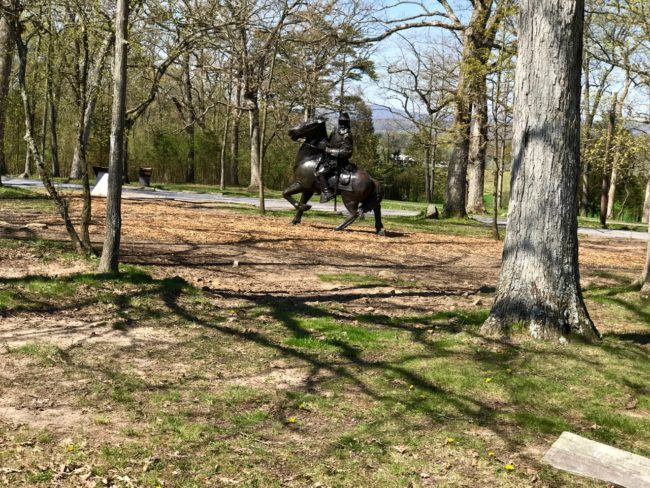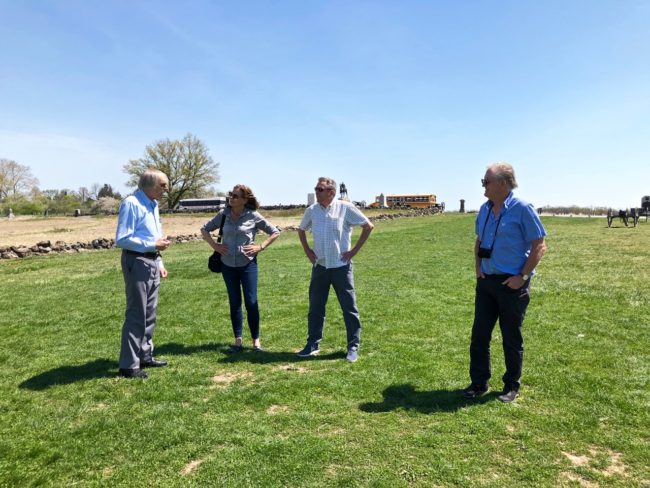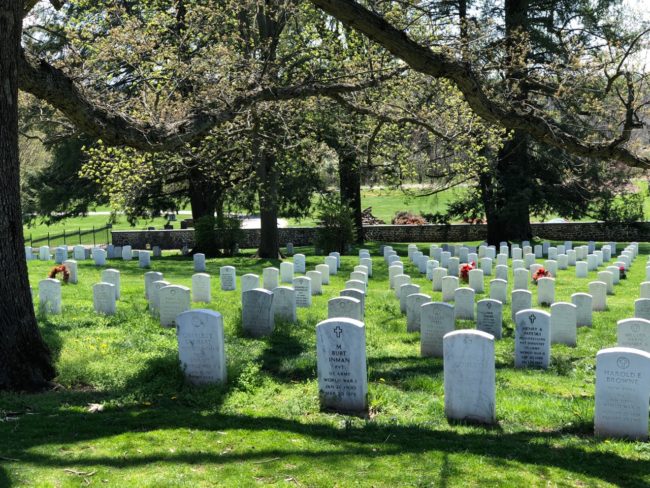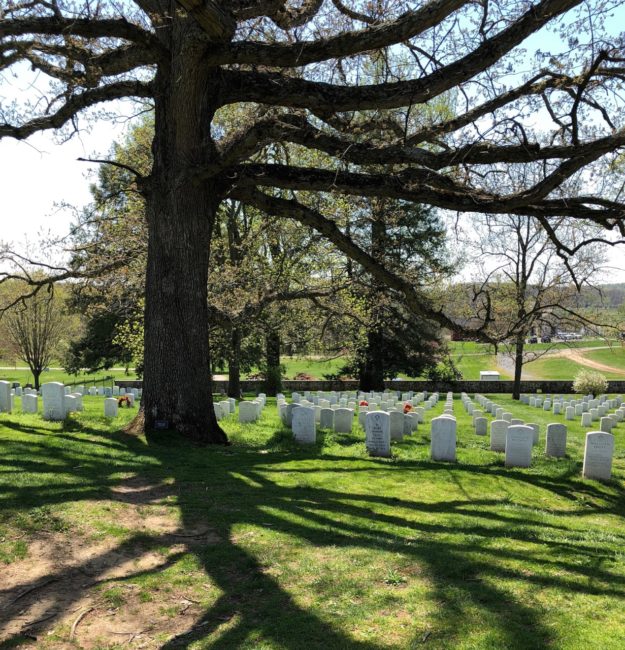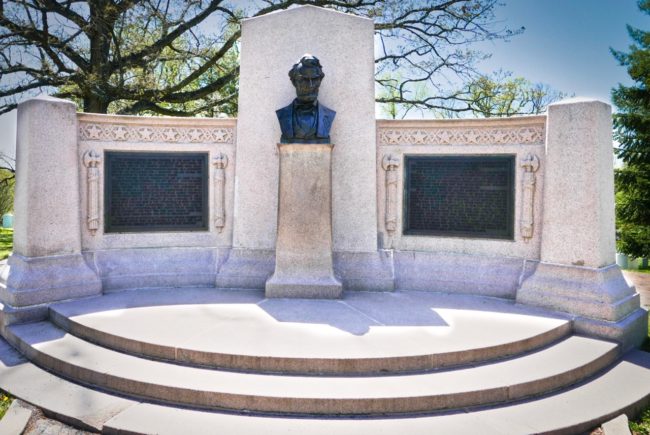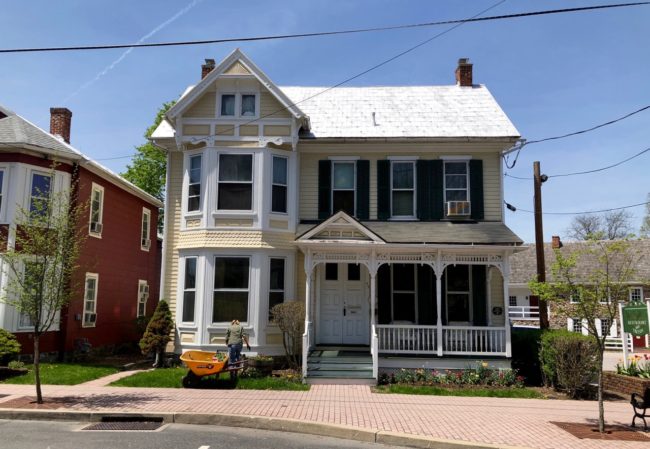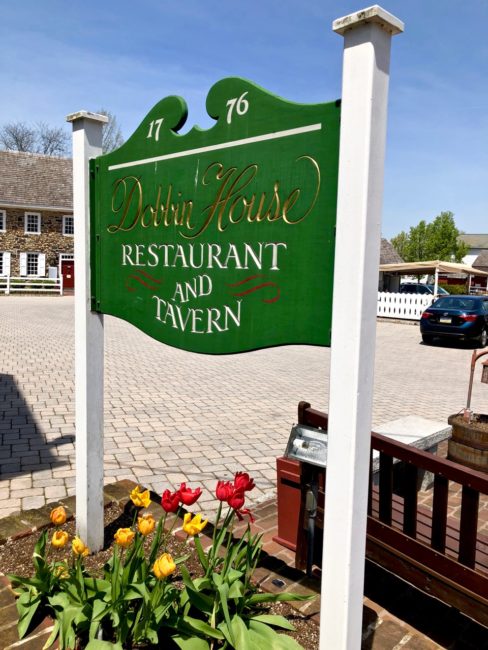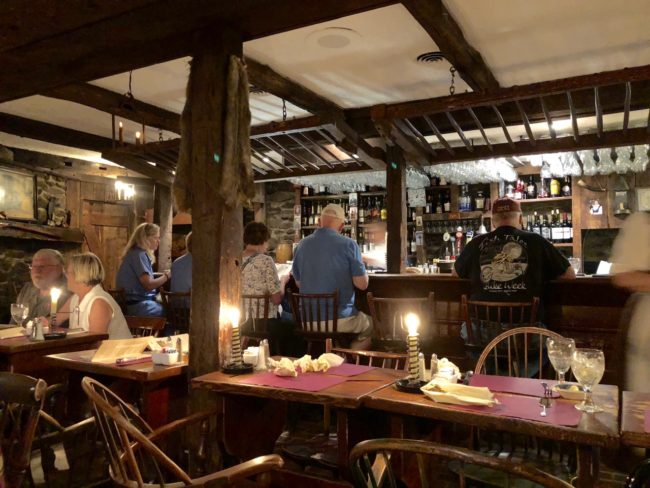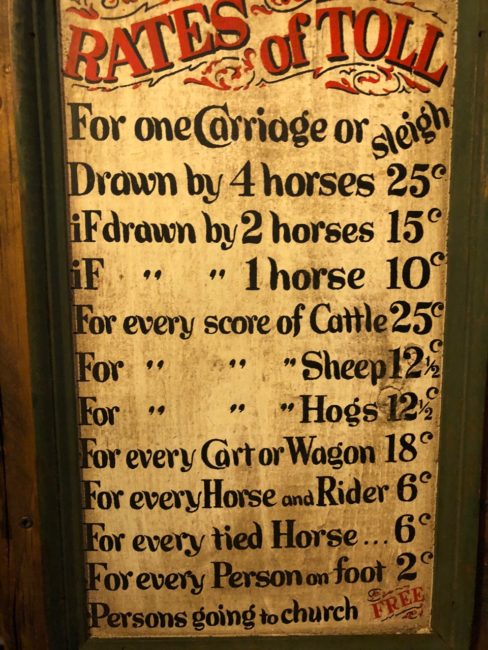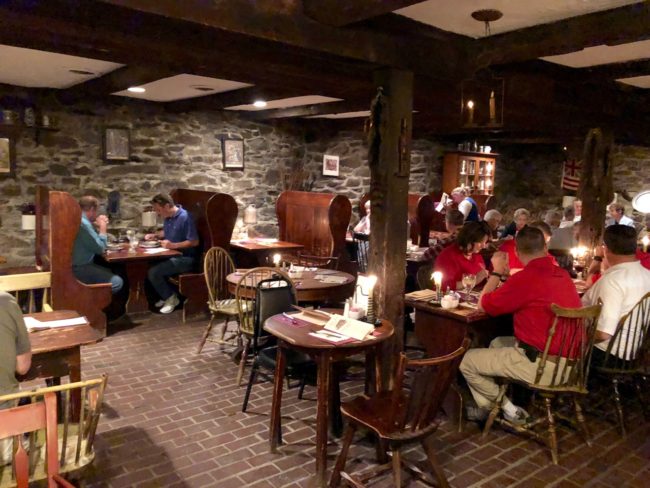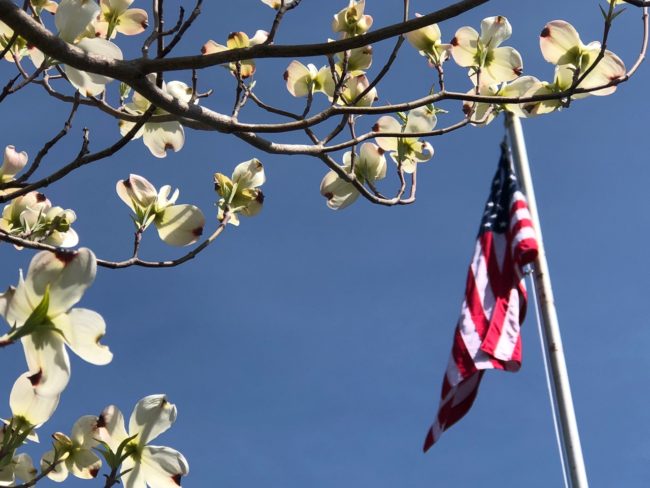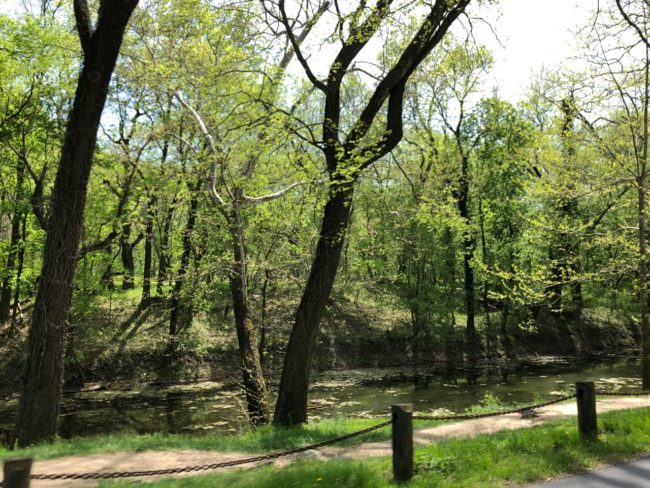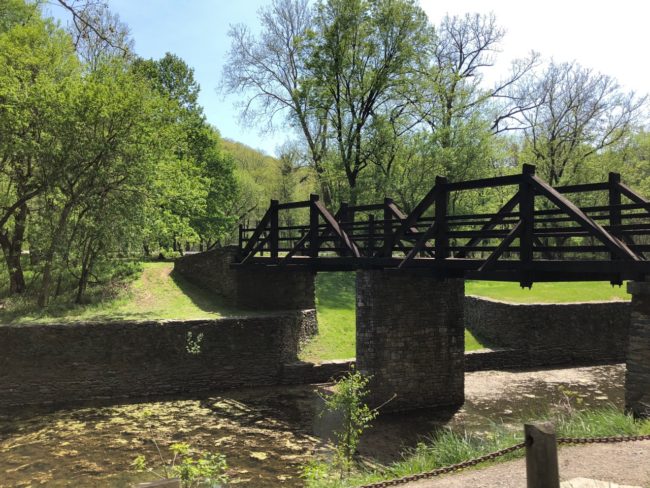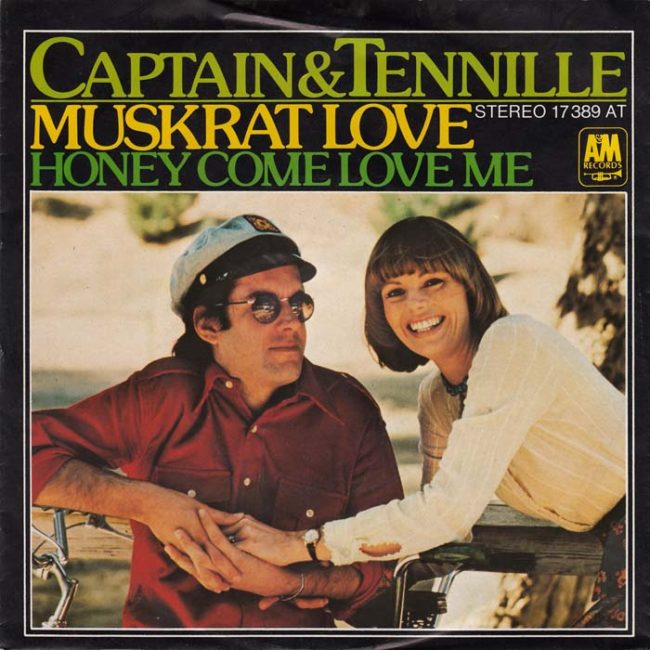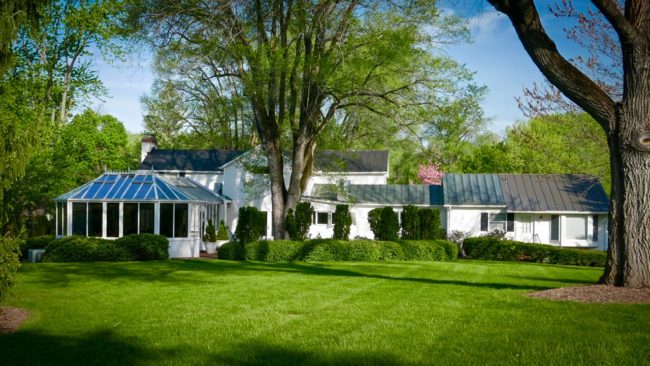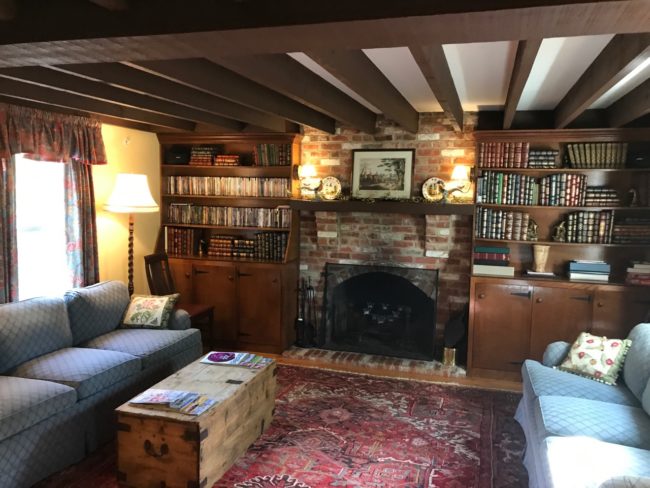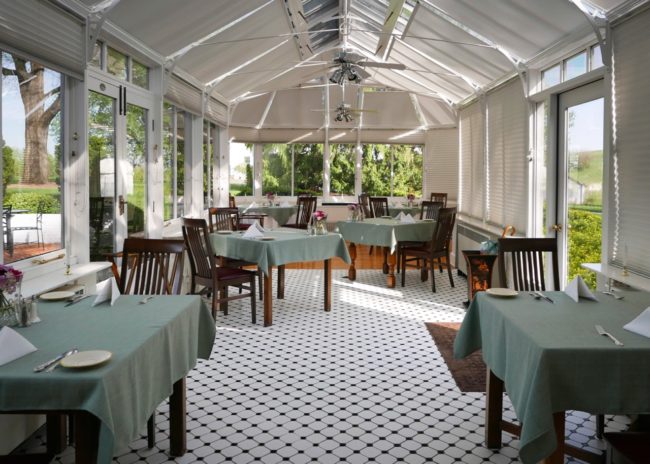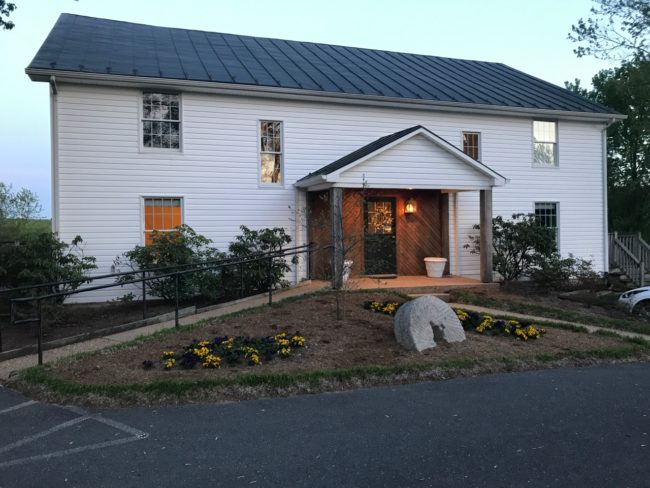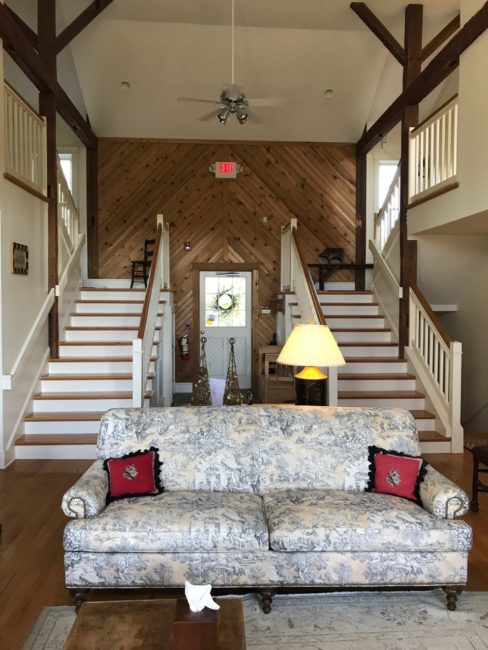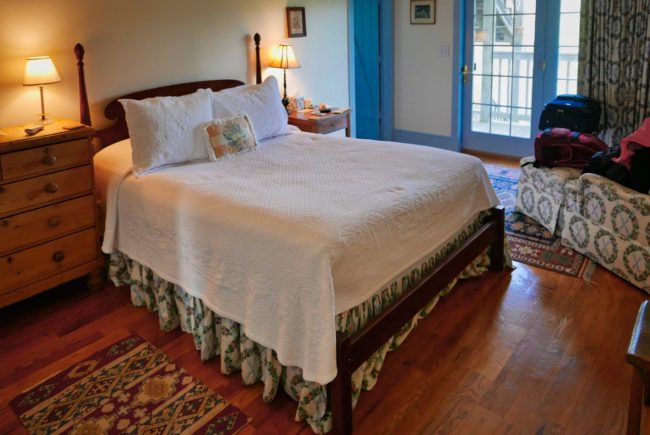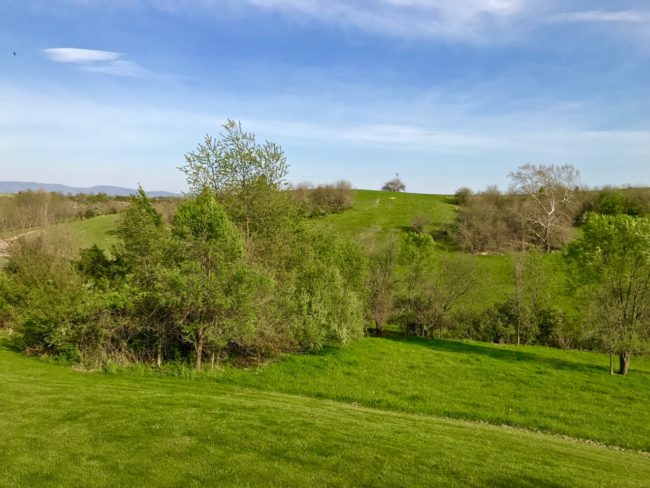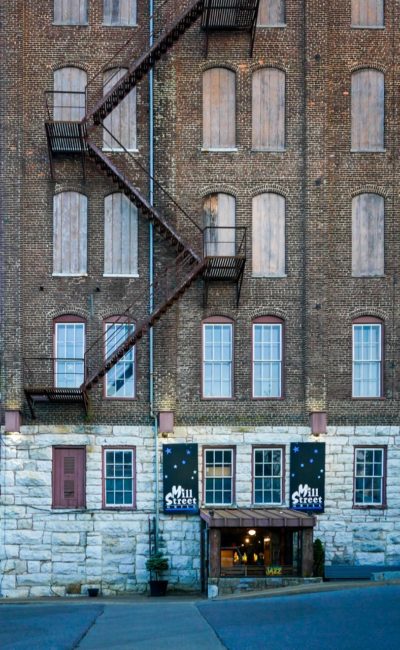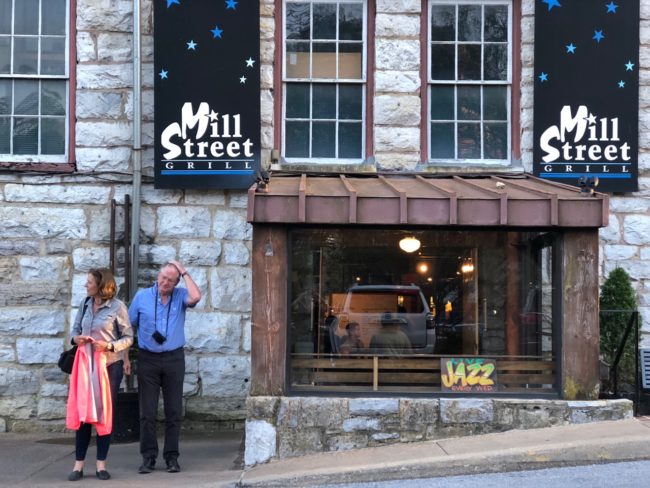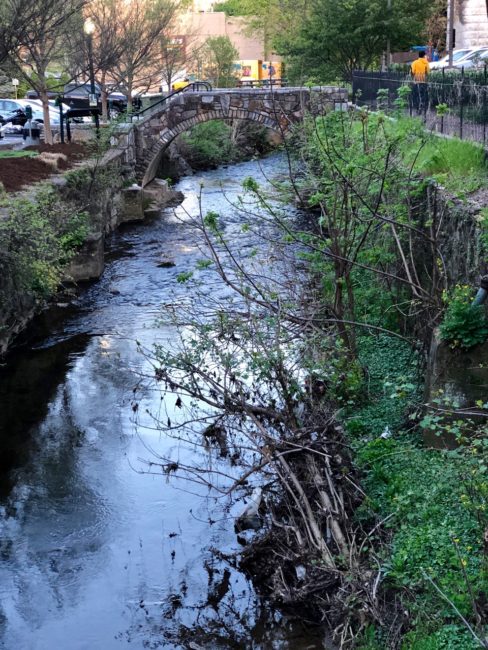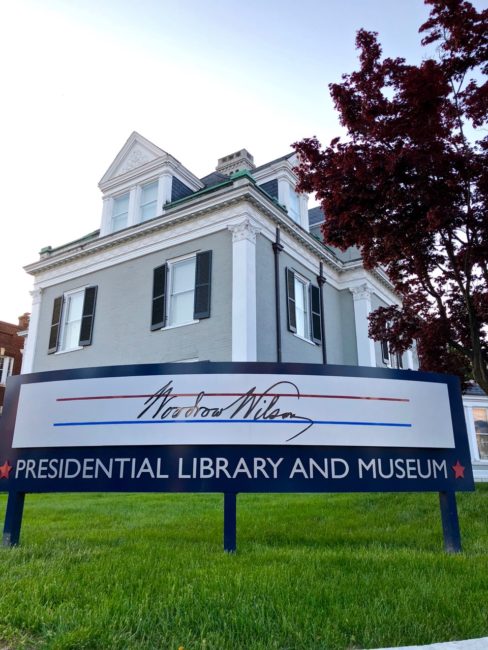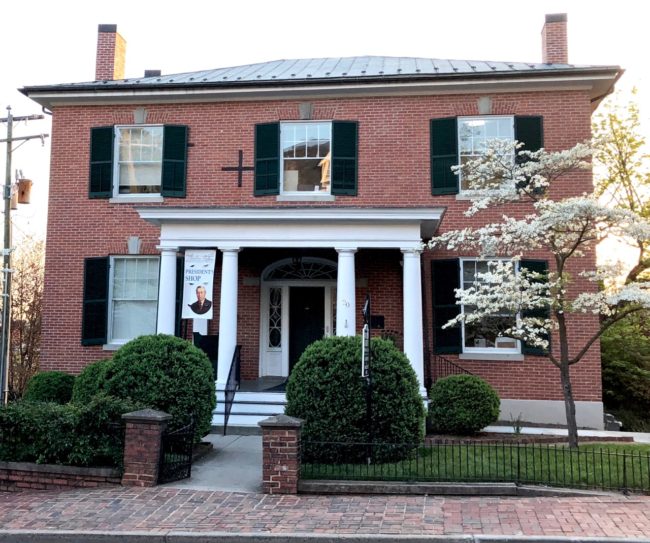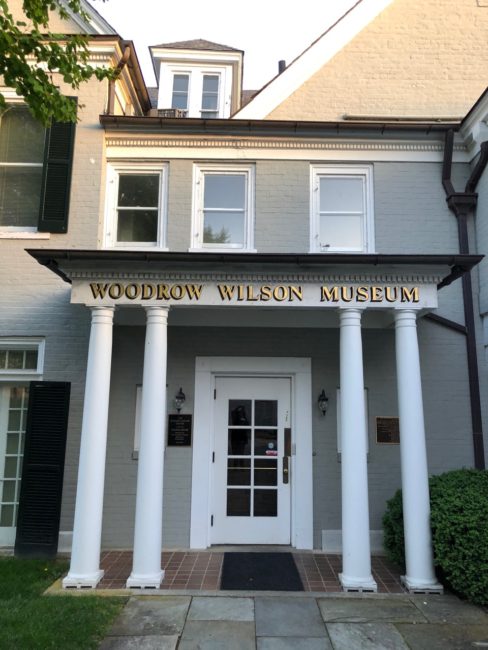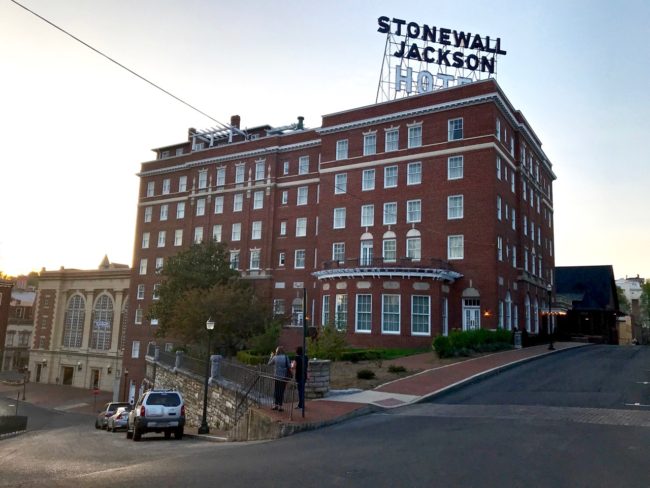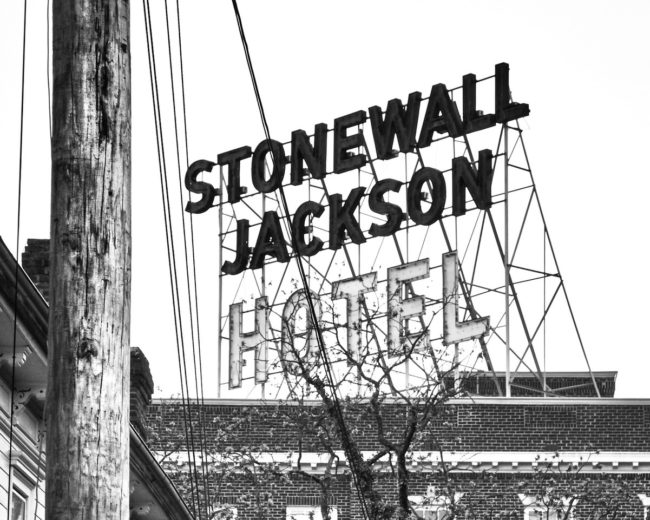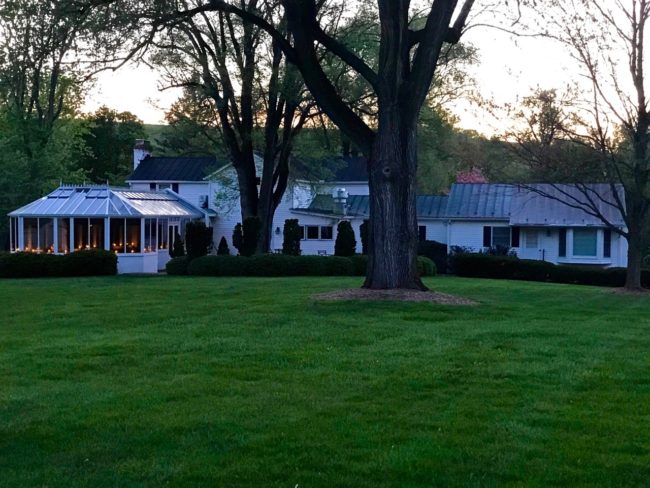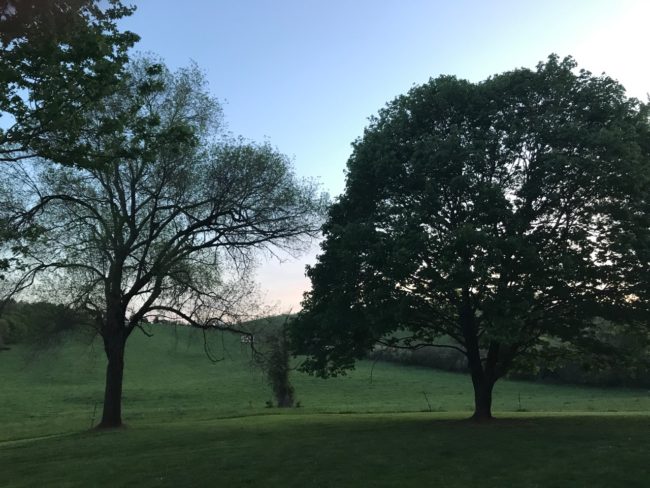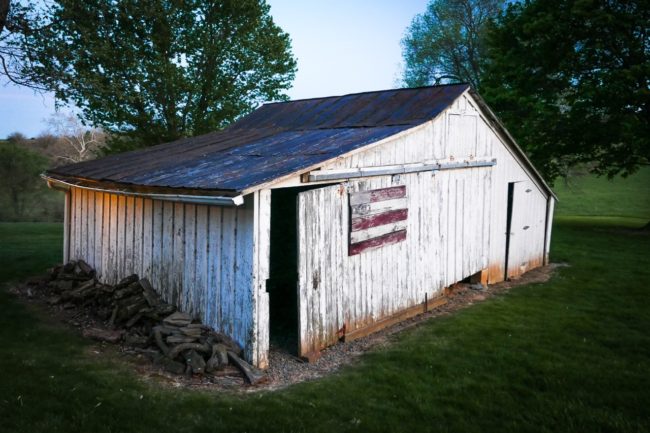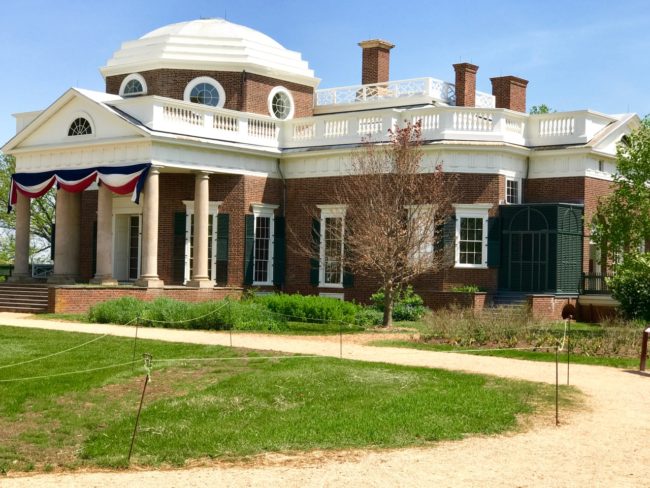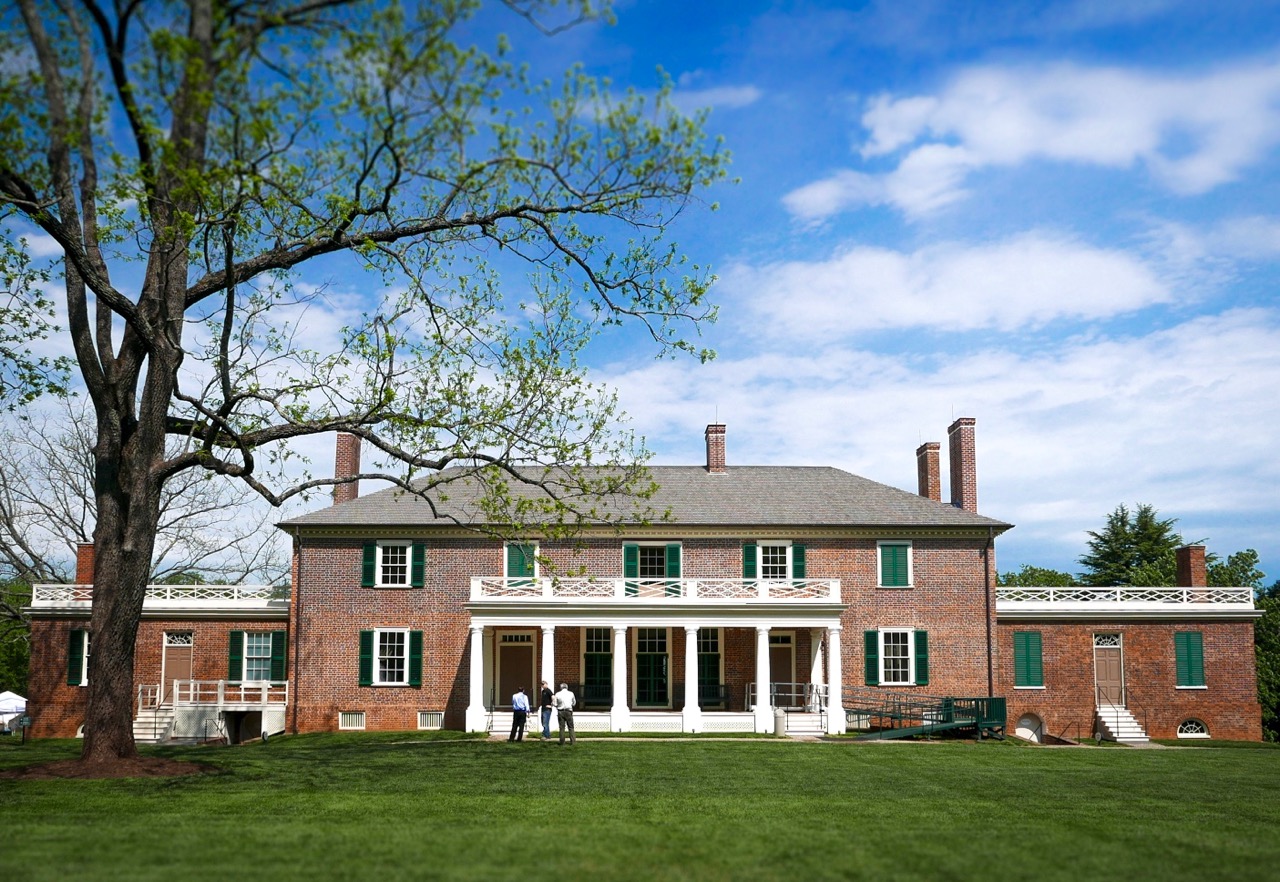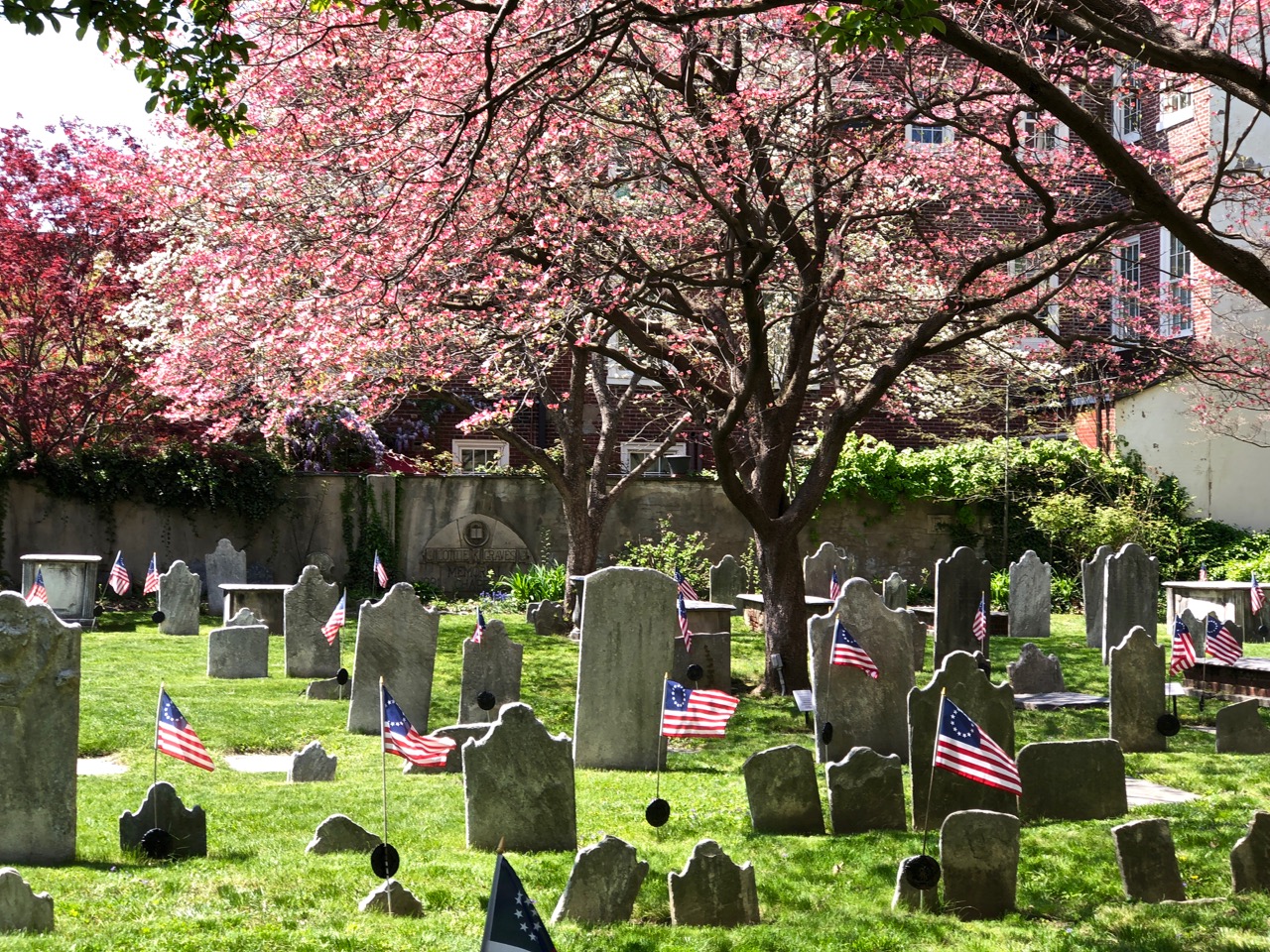
Chapter Five: Philly Finale
June 26, 2018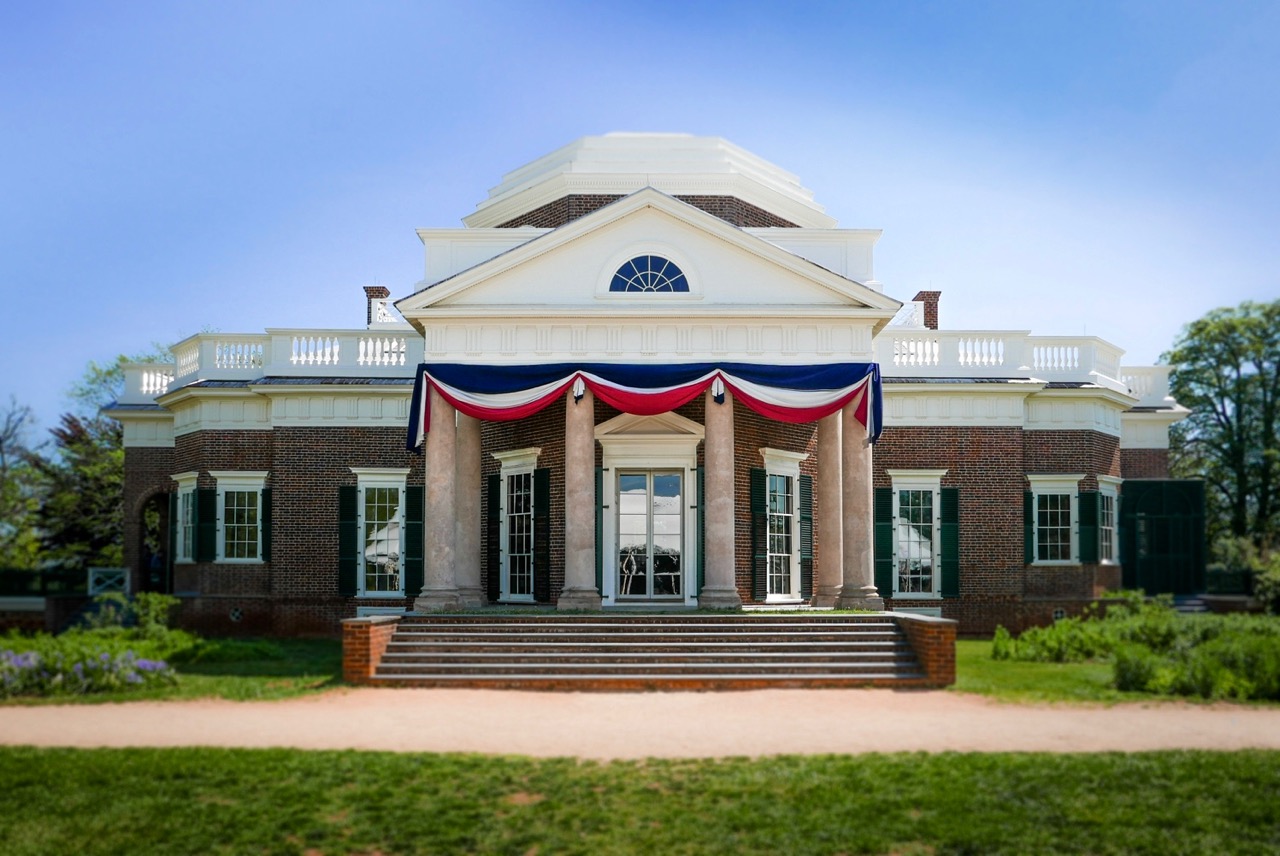
Chapter Seven: Presidents Day
July 12, 2018Mai Tai Tom’s Magical History Tour
Chapter Six: The Battle Of Gettysburg
Day Six – Trying To Keep My Eyes Open, Gettysburg By George, History Comes Alive, Francis Scott Key’s Son & The General, A Massive Screw-Up (Or Was It), Uni-Sickles, Warren Stands Tall, Home State Advantage Four Score, 1776, What State Are We In, Harper’s Bizarre, B&B Heaven and Getting Stonewalled
Seven score and 15 years ago the little town of Gettysburg, Pennsylvania, found itself in the middle of the most famous battle of the Civil War. It’s a spot we had all wanted to visit, and on this day we’d get our chance. Awaking before 5 a.m., after a cup of coffee or three, we hopped into our rental mobile for the nearly three-hour drive to Gettysburg. Fortunately, there was little traffic and about 8:45 we pulled into the Gettysburg National Military Park Museum & Visitor Center Parking Lot. We were about to become four of the more than 1 million people who visit here each year.
We passed a familiar looking man as we headed to the Visitor Center …
… where we would meet George, a licensed guide we had reserved in advance and who would drive us around the battlefield. Passing George the keys, we were off on a 17-mile loop of Gettysburg with our knowledgeable guide taking us on a chronological tour of the three day battle and stopping at many of the nearly 1,400 monuments and plaques.
Hopefully the following information is correct, but remember I had been up since 4:30.
Our first stop on a hot and humid morning was the Edward McPherson Barn.
This barn was used as a field hospital and aide station on Day 1 of the battle (July 1, 1863).
It was near here where Union cavalry scouts under General John Buford’s command engaged Confederate troops. Some historians contend that one of the cannon barrels under his bronze monument is the one that fired the first Union artillery shot of the battle. George did not go along with that story. Buford would die later that year of typhoid.
Nearby Buford stood the Major General John F. Reynolds Equestrian Statue. Reynolds was shot and killed on Day 1 of the conflict and buried on the 4th of July.
The 149th Pennsylvania Infantry Monument stands where the regiment was located on that first day.
As he drove, George filled us full of information such as the fact that 170,000 troops along with 90,000 mules and horses gathered in the area surrounding Gettysburg, a town whose population totaled only 2,400 people at the time.
Amazingly, only one civilian was accidentally killed during the three days of battle. Mary “Jennie” Wade was in the kitchen making homemade bread at her sister’s house when a rifle bullet went through her heart.
We passed by the 2nd Wisconsin Volunteer Infantry Monument, topped by the recognizable five-sided symbol of the Iron Brigade.
Another Union monument, this one at the base of Culp’s Hill (scene of a fierce nighttime battle on Day 2), is that of the 24th Michigan Volunteer Infantry Regiment. The 24th had more men killed or wounded than any Union regiment at Gettysburg. On this first day of the battle, 9,000 Union soldiers and 7,000 Confederate soldiers were killed or wounded.
We reached the perch on Oak Hill, the third highest point on the battlefield, where the Army of Northern Virginia opened fire on Union troops using these cannons. It took 12 horses to pull one cannon … true horse power.
The nearby Eternal Light Peace Memorial was erected for the 75th anniversary of Gettysburg in 1938 and dedicated by President Franklin D. Roosevelt on July 3, 1938. The dedication was attended by more than 250,000 people including 1,800 Civil War veterans, each and every one of them at least 90 years of age or more. There was once a gas lit eternal flame (it now runs on electricity) that proved to be the inspiration for JFK’s grave at Arlington.
Founded in 1835, Christ Evangelical Lutheran Church is the oldest structure in Gettysburg continuously used as a Church. We saw it from the Eternal Light Peace Memorial and also drove by it. Speaking of historical buildings, there are 180 of them that survived and are still standing. The buildings are marked with metal stars.
As George drove us around we attempted to take photos out the car window, which was just about as dangerous as being in the battle. This one is of the Monument to the 88th Pennsylvania Volunteer Infantry Regiment at Gettysburg.
Up until this point in the Civil War, Robert E. Lee had been victorious in every battle (except for a tie at Antietam), which is why the decision was made to take on the Union army on northern soil. This was also an ideal location for the supply line Lee needed to feed his troops and animals … 500 tons of food per day.
I talk about that because we were now at the Virginia Memorial. With Lee atop his favorite steed, Traveller, the group below represented the men who left their jobs to join the Confederate Army. From the left, they represent a professional man, a mechanic, an artist, a boy, a business man, farmer and a youth.
This was the first Confederate State monument erected at Gettysburg (1917). It’s also the largest Confederate monument on the battlefield. The sculptor, Frederick Sievers, was meticulous in his representation of Lee and Traveller, going as far as to hoof it over to Lexington, Virginia, to study Traveller’s skeleton at Washington and Lee University.
No matter where we traveled on the battlefield …
… the fences made for quite interesting shots.
Somewhere on Pleasanton Avenue we passed the Jacob Hummelbaugh House, which was used as a field hospital and rallying point on July 2, 1863. Confederate General William Barksdale died and was temporarily buried in the yard. Coincidentally, the body of Jennie Wade (the only civilian killed) was temporarily buried in the yard of another Gettysburg house in a coffin intended for Barksdale.
One of the more intriguing memorials is the one for the state of Louisiana. Called “Spirit Triumphant.” The memorial depicts “a wounded gunner of New Orleans Washington Artillery clutching to his heart a Confederate battle flag while above him the Spirit of the Confederacy sounds a trumpet and raises a flaming cannonball.”
We made our way to Little Round Top, the site of an integral battle on Day 2. This is where we learned about General Daniel Sickles, who disobeyed a direct order from General George Meade thereby leaving Little Round Top vulnerable and mostly undefended. His move turned out to be ok, as it confused the Confederates as much as it did the Union generals. Civil War historian James McPherson wrote, “Sickles’s unwise move may have unwittingly foiled Lee’s hopes.” The Union Army would hold Little Round Top for the duration of the battle.
Until that time, Sickles was best remembered as a member of the New York State senate who shot and killed Francis Scott Key’s son, who was having an affair with Sickles’ wife. The murder took place across the street from the White House. He became one of the first people to successfully use a temporary insanity defense by arguing he was “out of his mind when he shot Key,“ which turned out to be key to his acquittal.
During the Battle on Little Round Top, Sickles was hit in the leg by a Confederate cannonball. As he was taken out by stretcher, Sickles grinned and smoked a cigar. His leg was amputated that night. Sickles kept the bones from his leg and donated them to the Army Medical Museum in Washington DC, with a note in a cigar box that read, “With the compliments of Major General D.E.S.” He would visit his leg on occasion. There is no truth that his nickname was Uni-Sickles, however.
He’s one of the only generals not to have a statue or memorial at Gettysburg. His reply to that … “The entire battlefield is a memorial to Dan Sickles.”
The castle monument on Little Round Top represents the 44th New York and two companies from the 12th New York Infantry Regiments. The dimensions of the monument were “purposely designed to reflect the numeric designations of the units it represents. The tower is 44 feet high & the interior chamber is 12 feet square.”
Little Round Top looms over The Valley of Death.
The 25 1/2 foot memorial to the 91st Pennsylvania Volunteers is also on the summit of Little Round Top.
Brigadier General Gouverneur Kemble Warren’s statue stands atop the boulder he stood on during the battle. Warren (General George Meade’s chief of engineers), was sent to Little Round Top to find out what was going on, and when he got there was amazed to discover it was basically unprotected. He told Meade and Sickles, and troops eventually arrived to defend it. It is quite an impressive statue.
Little Round Top is also where Joshua L. Chamberlain gained fame and notoriety, although George thinks he gets a little too much credit. Momentarily mixing up my Chamberlains, I blurted out, “But he did score 100 points in a game once.”
Back in the car, we passed numerous more monuments, memorials …
The one for the New Jersey Volunteers was striking.
The Pennsylvania State Memorial is the largest at Gettysburg. Why? Using a sports analogy, George quipped, “They had home state advantage.” I believe you can climb up the monument, but any closer to the sun on this hot day, and I might have suffered the same fate as Icarus.
The 42nd New York Infantry was called the Tammany Hall Regiment.
This tall obelisk honors all of the U.S. Regular Army infantry, artillery, cavalry and engineer units that served in the Gettysburg Campaign.
We were now standing at The Angle, a Union position on Cemetery Ridge. Under Lee’s orders, Confederate General George Pickett was one of three Confederate generals who led the “charge” against General George Meade’s troops on the last day of the battle (July 3).
This monumental victory by the Union (more than 50% of the Confederate attackers were killed), ultimately proved to be the decisive battle that brought Lee his first defeat.
Another obelisk monument is dedicated to the 69th Pennsylvania Volunteer Infantry Regiment near the Copse of Trees, which was the focal point of Pickett’s Charge.
Knowing we were from California, George took us to a monument dedicated to the Golden State. It seems that when the war began a United States senator from California named James McDougall raised money to support a regiment commanded by Edward D. Baker, a former Californian who was a senator from Oregon. Four regiments of Pennsylvanians were called the California Brigade. Baker was killed in 1861, but after the war one of the four regiments “erected the memorial honoring the Pennsylvania 71st, which was dedicated to the Pennsylvania men of California Regiment.” Behind the monument is one of the approximately 24 “Witness Trees” that still survive from the Civil War.
Now we were at the High Water Mark of our tour. Really! The High Water Mark of the Rebellion Monument is in the “form of a giant bronze book opened to display two pages which list the units of both sides that took part in Longstreet’s Assault (aka Pickett’s Charge) on July 3, 1863.”
General George Meade led those 88,000 Army of the Potomac troops, so he got a nice, big monument dedicated to him. Here he rides his favorite horse, Old Baldy, who was injured a few times during battle, but lived until 1882. He participated in Meade’s funeral procession as a riderless horse in 1872.
The monuments for Meade and Robert E. Lee stand at opposite ends of the battlefield … facing one another. Lee’s statue atop the Virginia Memorial on Seminary Ridge is located close to the point where Pickett started his charge. Meade’s monument, on the other hand, is situated at Cemetery Ridge, close to where Pickett’s Charge was thwarted. Just like Gilligan (without the shipwreck), our three-hour tour was complete.
There are many ways to visit Gettysburg … this looked interesting ….
… but I highly recommend hiring a licensed guide. George brought the battles, strategies and those involved in the conflict to life. His knowledge was invaluable in navigating us (literally) to many of the most important spots in the battlefield. With him driving, it afforded us all the opportunity to see one of the most hallowed grounds in the country. Thanks George!
Before heading into town to a restaurant that George had recommended, we stopped at the Soldiers National Cemetery, where more than 3,500 Union soldiers are buried.
It is also the spot where Abraham Lincoln gave a little speech he thought “the world would little note nor long remember what we say here.”
We should have stayed longer, but we had been up for eight hours without food, except for the last few tidbits from KarenPhilly’s party bag. It was off to the Dobbin House Tavern, which truly was constructed four score and seven years before Lincoln’s speech, making it the oldest standing structure in Gettysburg. Rumor has it that it was the first stop on the Underground Railroad north of the Mason-Dixon line.
Downstairs was the dark and, thankfully, cool room. It was a very, very hot and humid day. Hot beef sandwiches, a burger and a Reuben sandwich gave us the energy to hop in the car for the long drive to our home for the evening, Staunton, Virginia.
Our route took us through a lovely area of the country and we realized at one point we had driven in four states as we made our way south … Pennsylvania, West Virginia, Maryland and Virginia.
We made one stop along the way at Harpers Ferry, West Virginia, to catch a quick view. Harper’s Ferry sits at the confluence of the Shenandoah and Potomac rivers.
After checking out the area …
… and a cool looking wooden bridge over the Shenandoah Canal we headed south.
I suddenly had to stop because a muskrat ran in front of me. Mary (who knows virtually every lyric of every 60s and 70s song written) started singing Muskrat Love, and our afternoon was now ruined by having that insipid tune in our head.
It was late afternoon when we rolled into the town of Staunton, which George had told us was not pronounced “Stawn-ton” as I had been saying. He said the correct pronunciation is “Stanton.” Our reservations were at a B&B named the Inn at Old Virginia, and when our GPS stated we had reached our destination, our hearts sank momentarily when we saw a rather ramshackle property. Fortunately, it was not the Inn at Old Virginia, after all (stupid GPS).
Nearby, down a long, curving driveway we entered an area that takes verdant and bucolic to a new level (sort of like my redundancy). The inn, nestled in among rolling hills and hundreds of trees in the Shenandoah Valley turned out to be one of the best B&Bs we’ve stayed at on all our trips.
We were greeted by Katherine who took us into the Main House and then its beautiful English style breakfast room, where we would have a delicious meal the following morning. She provided us with freshly baked snickerdoodles, of which I could have eaten about 50. Since I was nearly brain dead by now, Tracy wrote in our journal that the “smell of baking granola wafted through the entry.”
Katherine asked if we would prefer rooms in the barn. I thought, “It’s nice she wants us in a stable environment.” As it turned out, this is not Mr. Ed’s kind of barn. Just across the plush lawn we walked inside a charming building to a common area with a vaulted ceiling.
There are eight rooms in the former barn, and both couples enjoyed their rooms that looked out over the vast, green countryside.
Sadly, I received a text from my niece that my sister, who had been fighting Ovarian cancer for four years, had taken a turn for the worse. It didn’t come as a complete shock, but when I saw my sister right before we left, the doctors were talking months, not days.
Katherine had given us a few dining options and deciding quickly, we chose the Mill Street Grill, a short drive away. It was a good choice.
It had a colorful interior, an attentive staff and, most importantly, good food. We started with freshly baked bread and the house made (and fabulous) blackberry butter. Wow! Kim and I had the prime rib, while Tracy opted for the crab and blue cheese soup, along with a spinach salad topped with a skewer of Cajun shrimp. Mary went the healthy route with a special Spring salad with fried goat cheese. Although stuffed, we were able to power down a complimentary bowl of peppermint ice cream. When Kim exited, I believe he was thinking, “Why did I eat all that ice cream?” Or maybe he just thinking he could have had a V8.
Deciding we needed to walk off a few of those calories, we strolled around the picturesque town in search of Woodrow Wilson.
In a few blocks we located the Woodrow Wilson Presidential Library and Museum. Both it and the gift shop were, of course, closed.
There many cute houses, and on the way back to our car we saw something unexpected, the Stonewall Jackson Hotel. I joked that although the hotel was kind of expensive, it would only cost you an arm.
Returning to the inn, we spent some time admiring the grounds and this beautiful spot we were staying.
It would have been nice to stay longer, but we needed to get our sleep, because we’d be up early the next day.
Looking back on the day, we loved the time spent at Gettysburg and, in hindsight with that darned 20-20 thing, I probably should have added a day to our trip, so we could have spent some more time there. I would have liked to visit the museum and spend time at the cemetery. However we couldn’t due to the three weeks we’re taking off in September for our northern Italy trip (talk about a first world problem). I hope we return.
Tomorrow, we’d punch our UNESCO card at a Founding Fathers’ home, become indoctrinated at another president’s house and witness a very controversial statue.
Next: Chapter Seven – Presidents Day
Day Seven – Waffling, Tom & Tom, Terrific Tour, Sally, Jefferson’s Coffee Addiction, Ash Lawn Or Highland, Payne In The Ass, Hush Hush Sweet Charlottesville, Can Never Get Enough Hamilton, Contentious Grounds, The Hills Are Not Alive, Orange On The Way To Orange, Ooh It’s A Holliday and The Odd Couple

